Slovakia, a landlocked country in Central Europe, boasts of an impressive diversity of bird species. The varied topography of the country including mountains, forests, wetlands, rivers and lakes provide a perfect habitat for a wide range of birds.
Slovakia is home to around 350 species of birds including breeding birds, winter birds and migratory birds. The country’s diverse birdlife is a result of its location at the crossroads of European biogeographic regions.
Slovakia also has many protected bird areas and national parks which are home to some rare and endangered bird species.
In this article, we will delve into the fascinating world of birds of Slovakia, looking at their habitats, diet, breeding habits and conservation status.
1. Bustard
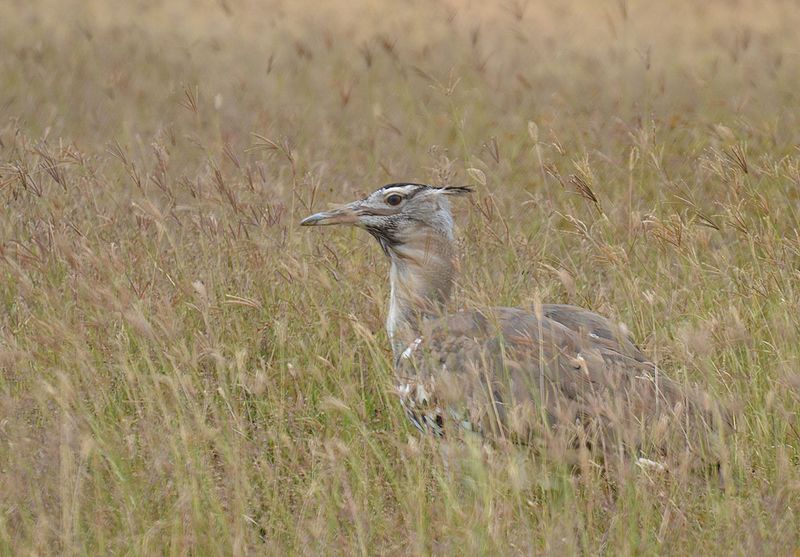
Bustards are large, terrestrial birds that inhabit dry grassland areas and the steppes of the Old World. They range from 40-150 cm in length and belong to the family Otididae.
Bustards have an omnivorous diet consisting of leaves, buds, seeds, fruit as well as small vertebrates and invertebrates.
These birds usually live a solitary life but can be seen gathering around water sources or food during certain times of year such as mating season.
Due to their large size they are vulnerable to predation by foxes or other animals which is why they tend to remain alert at all times.
When in open spaces while relying on camouflage for protection against predators when out in tall vegetation coverings.Scientific classification:
| Kingdom | Animalia |
| Phylum | Chordata |
| Class | Aves |
| Clade | Otidimorphae |
| Order | Otidiformes Wagler, 1830 |
| Family | Otididae Rafinesque, 1815 |
Also Featured In: Common Birds in India, Ukrainian Birds You Should Know
2. Bean Goose
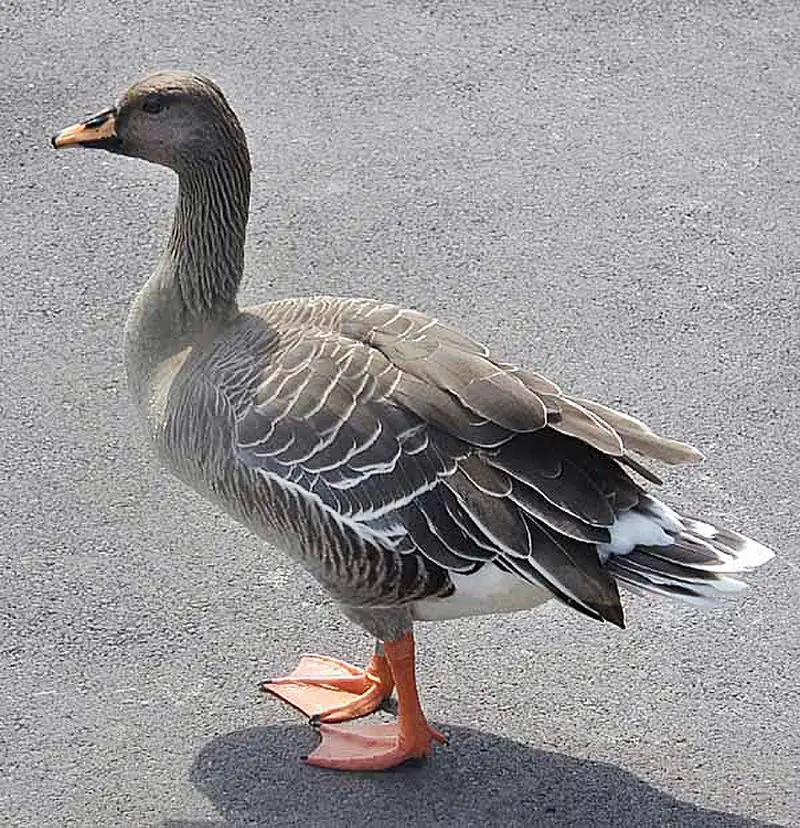
The Taiga Bean Goose is a medium sized waterfowl species that breeds in northern Europe and Asia. It has an elegant grey-brown plumage with black barring on its wings and tail, which makes it easy to identify amongst other geese.
In the winter months, this migratory bird moves further south for warmer climates.
The American Ornithological Society recognizes two subspecies of bean goose – tundra bean goose and taiga bean goose whereas some other authorities consider them as one species.
The diet of this majestic creature mainly consists of aquatic plants such as grasses, sedges or cereals depending upon season availability during migration periods.Scientific classification:
| Kingdom | Animalia |
| Phylum | Chordata |
| Class | Aves |
| Order | Anseriformes |
| Family | Anatidae |
| Genus | Anser |
| Species | A. fabalis |
Also Featured In: Russian Birds, Birds of Norfolk
3. Grey Heron
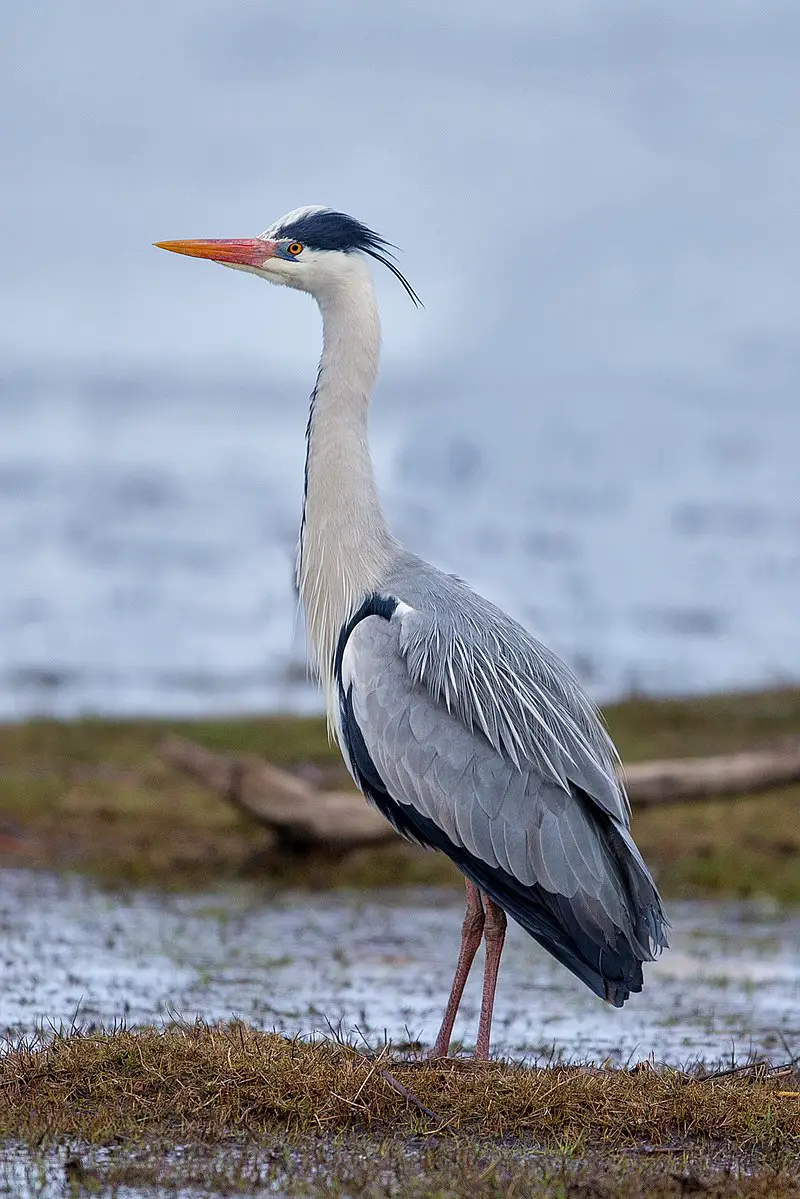
The grey heron is a majestic bird found in temperate regions of Europe, Asia and parts of Africa. It has long legs to wade through the shallow waters where it feeds on aquatic creatures such as frogs, fish and insects.
In wintertime some migrate southwards but others stay put in their natural habitats; lakes, rivers and marshes. They can also be spotted near coasts or along estuaries.
Grey Herons have beautiful blue-grey feathers and an impressive wingspan that makes them stand out from other birds when they soar gracefully across the sky.
These graceful creatures are not only easy on the eye but wise hunters too.Scientific classification:
| Kingdom | Animalia |
| Phylum | Chordata |
| Class | Aves |
| Order | Pelecaniformes |
| Family | Ardeidae |
| Genus | Ardea |
| Species | A. cinerea |
Also Featured In: Common Birds in Japan, Water Birds Live around Us
4. White-Backed Woodpecker
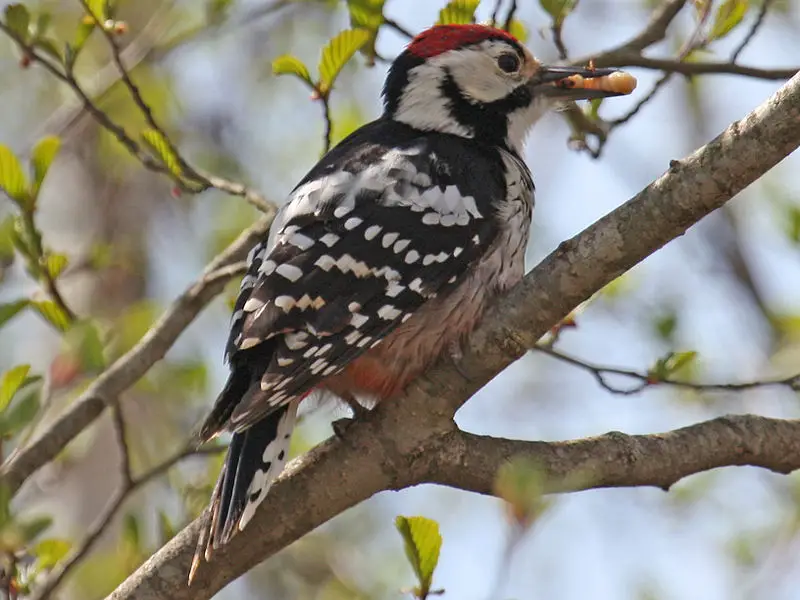
The White-backed Woodpecker is a beautiful bird that can be found in Eurasia. It has white plumage on its back, giving it its name.
Its head and wings are grey with black barring while its breast and belly have red speckles across them.
This species was first described by German naturalist Johann Matthäus Bechstein in 1802 who gave it the scientific binomial of Picus leucotos due to the white colouring along its back from the Greek words “leukos” meaning ‘white’ and “-nōtos” which means ‘backed’.
The type locality for this species is Silesia where these birds are still commonly seen today.Scientific classification:
| Kingdom | Animalia |
| Phylum | Chordata |
| Class | Aves |
| Order | Piciformes |
| Family | Picidae |
| Genus | Dendrocopos |
| Species | D. leucotos |
Also Featured In: Common Serbian Birds, Common Estonian Birds
5. White Wagtail
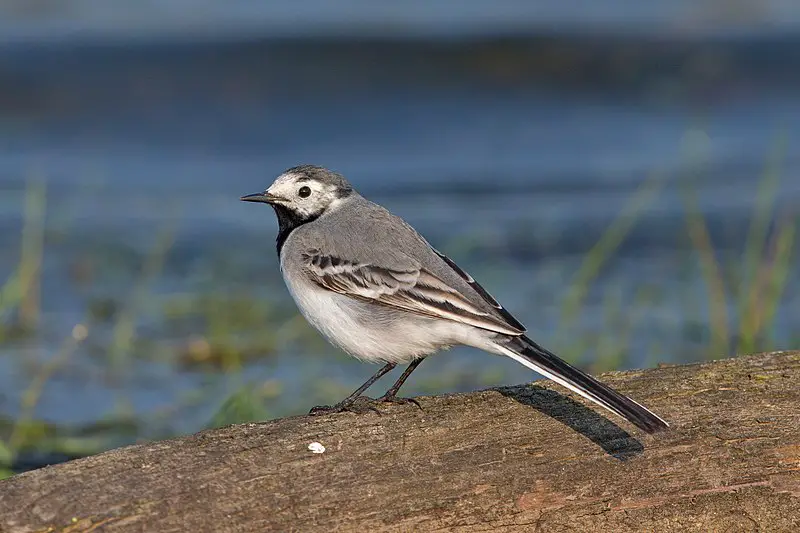
The White Wagtail is a small passerine bird that belongs to the Motacillidae family, which includes pipits and longclaws. This species breeds in Europe, Asia Palearctic and North Africa.
It has also been seen as a scarce breeder in Alaska. Those living in mild climates are found year-round but others migrate south for winter months to Africa.
In Ireland and Great Britain it’s known for its darker subspecies called Pied Wagtails with their distinctive white heads, grey backs and yellow breasts.
They feed on insects such as flies, beetles or spiders by wagging their tail up & down while they walk along surfaces like tree trunks or walls looking out for prey – hence receiving this name.
To attract mates they sing melodic songs from high perches too.Scientific classification:
| Kingdom | Animalia |
| Phylum | Chordata |
| Class | Aves |
| Order | Passeriformes |
| Family | Motacillidae |
| Genus | Motacilla |
| Species | M. alba |
Also Featured In: Egyptian Birds, Birds of Latvia
6. Eurasian Reed Warbler
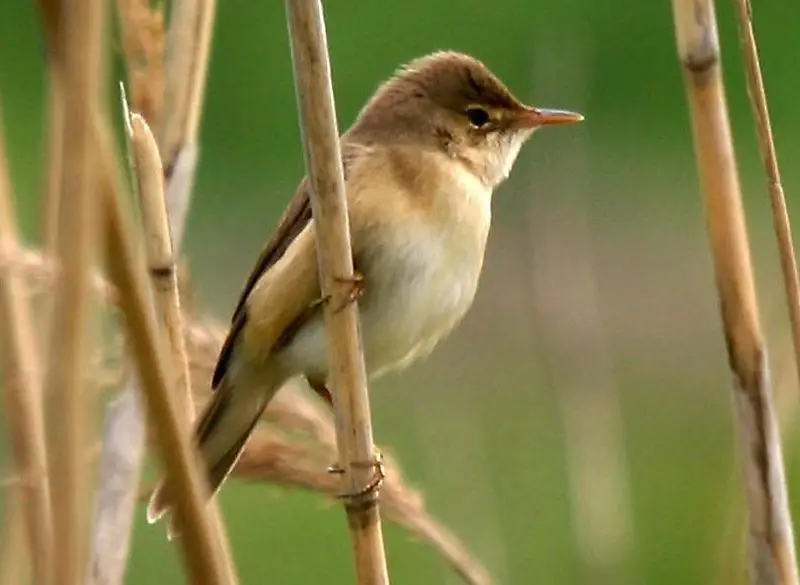
The Eurasian reed warbler (Acrocephalus scirpaceus) is a species of Old World Warbler native to the temperate parts of Europe and Asia.
It breeds in wetlands such as marshes, ponds and rivers with dense vegetation like reeds or tall grasses.
During its wintering season, it migrates southward to sub-Saharan Africa where there are milder conditions.
This small bird has streaked brown plumage on the upperparts and white underparts which makes it difficult for predators to spot among the foliage.
Its diet consists mainly of insects including aphids, caterpillars larvae and moths caught while flying over water or by gleaning from plants growing near water bodies.
The male sings an attractive song consisting of several phrases repeated one after another as part of their courtship display during breeding season in order attract females for mating purposes.Scientific classification:
| Kingdom | Animalia |
| Phylum | Chordata |
| Class | Aves |
| Order | Passeriformes |
| Family | Acrocephalidae |
| Genus | Acrocephalus |
| Species | A. scirpaceus |
Also Featured In: Italian Birds You Should Know, Common Algerian Birds
7. Red Kite
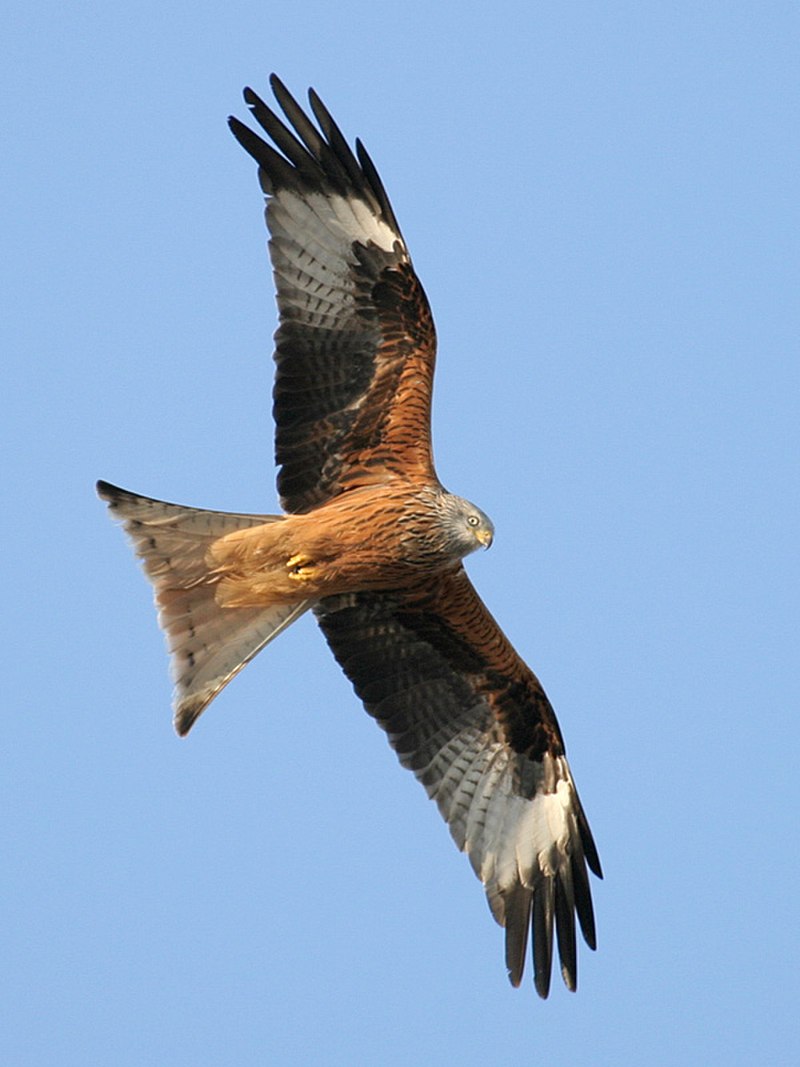
The Red Kite is a magnificent bird of prey, belonging to the family Accipitridae. It can be found in western Europe and northwest Africa where it breeds, while also occurring occasionally in northern Iran.
These birds are medium-large size with wingspans ranging from 125 – 170 cm wide. They have reddish brown plumage on their upperparts and pale gray underneath.
The Red Kite feeds mainly on small mammals, carrion and insects which they hunt for by soaring through the air using thermals to gain altitude before diving down onto its prey.
Furthermore, this species has adapted well to human presence since it often scavenges near roadsides or rubbish dumps as an easy source of food.
All things considered, these majestic creatures make up a beautiful part of our natural environment that should definitely not go unnoticed.Scientific classification:
| Kingdom | Animalia |
| Phylum | Chordata |
| Class | Aves |
| Order | Accipitriformes |
| Family | Accipitridae |
| Genus | Milvus |
| Species | M. milvus |
Also Featured In: Native Birds Of Germany, European Birds
8. Eurasian Wryneck
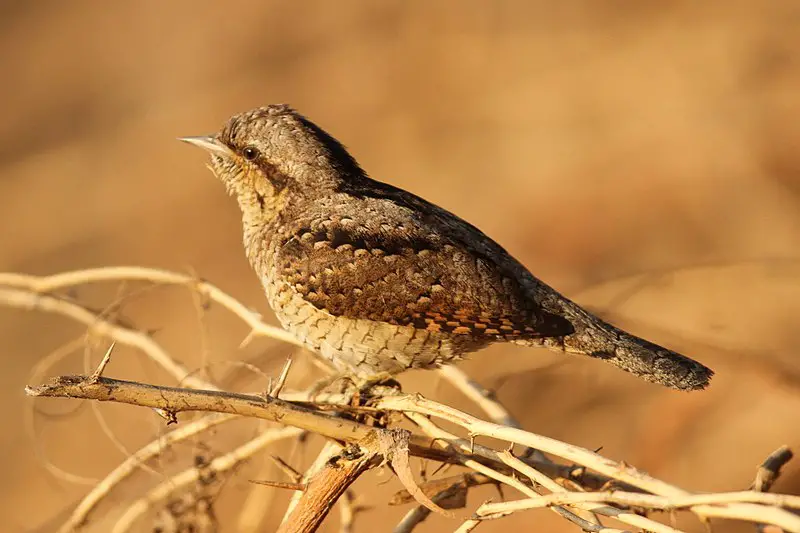
The Eurasian Wryneck is a species of woodpecker found in temperate regions of Europe and Asia. They breed during the summer months, but migrate south to tropical Africa or southern Asia for winter.
These birds are quite adaptable when it comes to their habitat, as they can be seen in open countryside, woodland, orchards and gardens alike.
To identify them you should look out for their distinctive brownish-grey feathers with black bars on the wings and tail; males also have red markings around their neck too.
Their diet consists mainly of insects which they find by probing into loose bark on trees or digging through soil with its sharp bill.
All in all an amazing bird that deserves more attention.Scientific classification:
| Kingdom | Animalia |
| Phylum | Chordata |
| Class | Aves |
| Order | Piciformes |
| Family | Picidae |
| Genus | Jynx |
| Species | J. torquilla |
Also Featured In: Common Uzbekistan Birds, Native Birds of Kazakhstan
9. Bearded Reedling
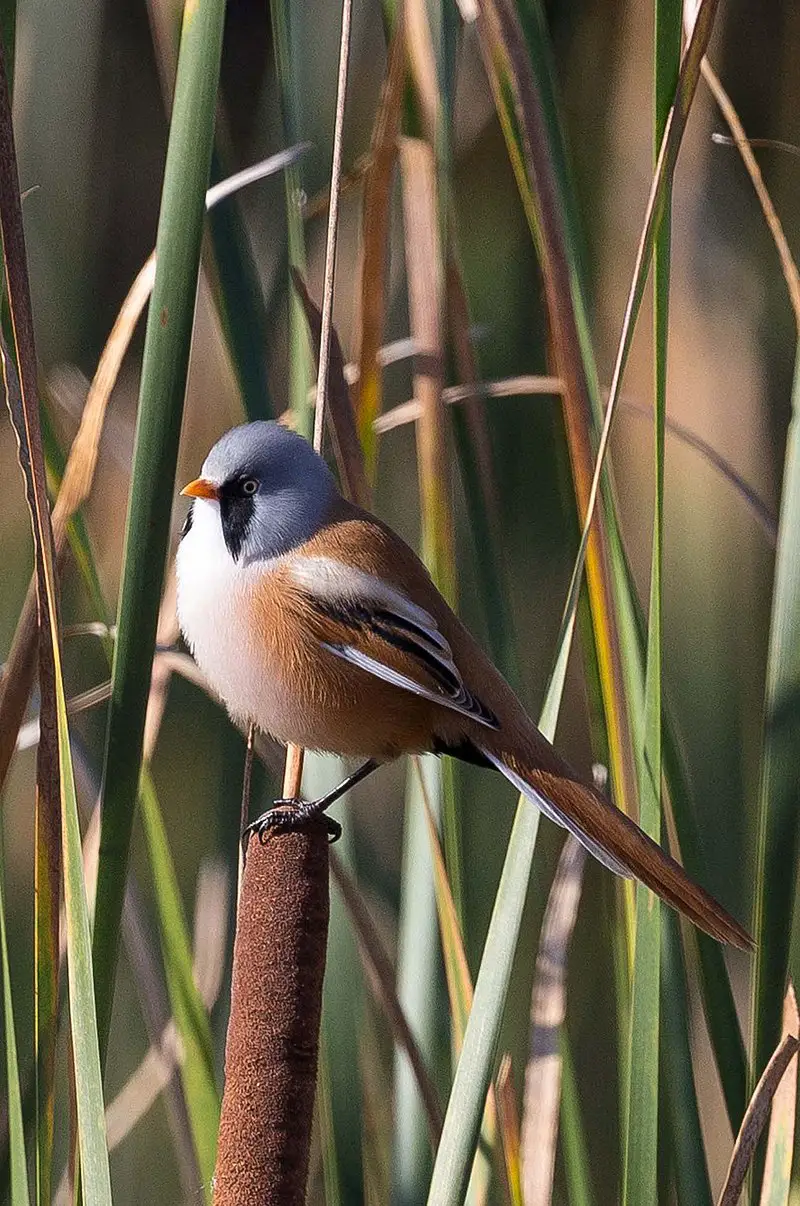
The Bearded Reedling is a small passerine bird found in reed-beds across Europe, Asia and North Africa.
It is easily identified by its distinct black and white plumage with males having yellow faces.
This species belongs to the only family of birds known as Panuridae and was first described by Carl Linnaeus back in 1758.
They feed on insects such as beetles, flies, moths among others but also consume seeds from plants like sedges or rushes during winter months when food availability decreases significantly.
These birds are territorial meaning that they have their own area where they live which can vary from 8 to 12 hectares depending on the seasonality of insect abundance within these areas making them an important part for maintaining healthy ecosystems in wetlands around their range.Scientific classification:
| Kingdom | Animalia |
| Phylum | Chordata |
| Class | Aves |
| Order | Passeriformes |
| Family | Panuridae Des Murs, 1860 |
| Genus | Panurus Koch, 1816 |
| Species | P. biarmicus |
Also Featured In: Birds of United Kingdom, Most Common Romanian Birds
10. Hawfinch
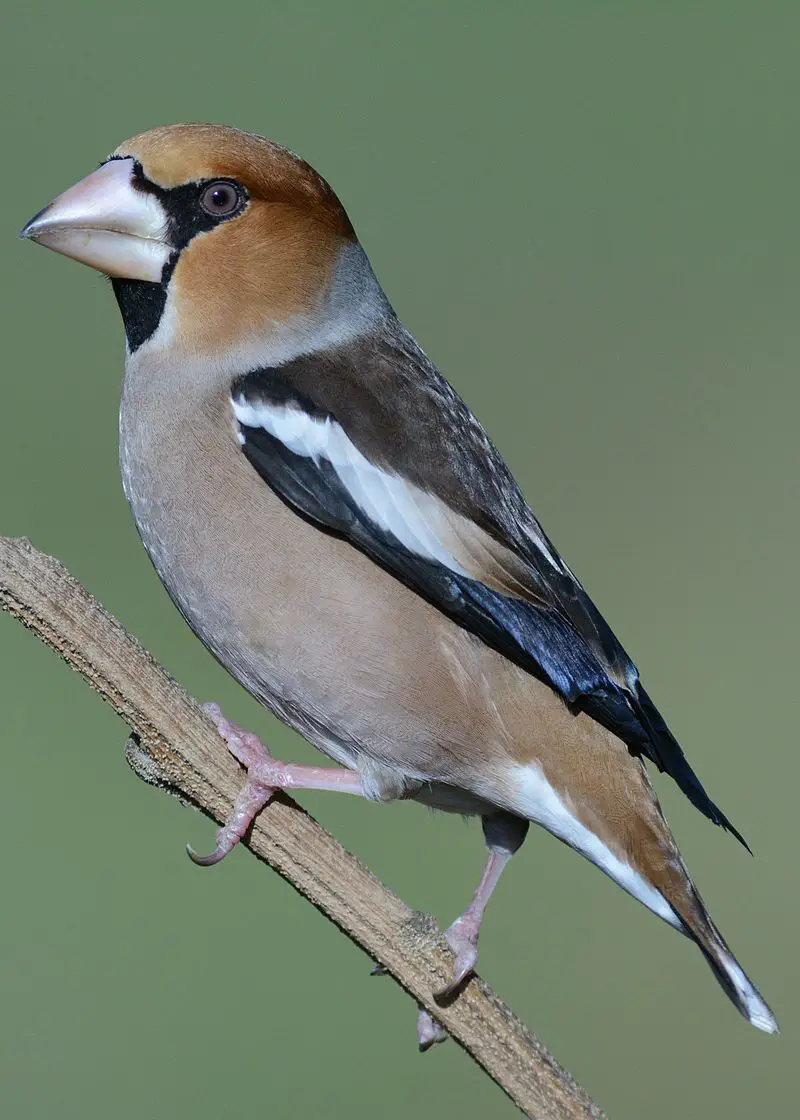
The Hawfinch is a stunning passerine bird of the finch family. It lives in Europe, North Africa, and parts of Asia and stands out for its large size amongst other members of its family.
Its most recognizable feature is its bulky bill which it uses to crack open hard nuts like hazelnuts and cherry stones.
The male has bright pinkish-red underparts while the female’s are more dull browns or greys.
Both sexes also have distinctive black wings with white patches towards their tips. Their closest living relatives are found across East Asia as well as some species in both North America and Canada.
These smart birds often gather together in small flocks during wintertime when food sources become scarce making them much easier to spot.Scientific classification:
| Kingdom | Animalia |
| Phylum | Chordata |
| Class | Aves |
| Order | Passeriformes |
| Family | Fringillidae |
| Subfamily | Carduelinae |
| Genus | Coccothraustes Brisson, 1760 |
| Species | C. coccothraustes |
Also Featured In: Most common Birds in France, Asian Birds
11. Alpine Chough
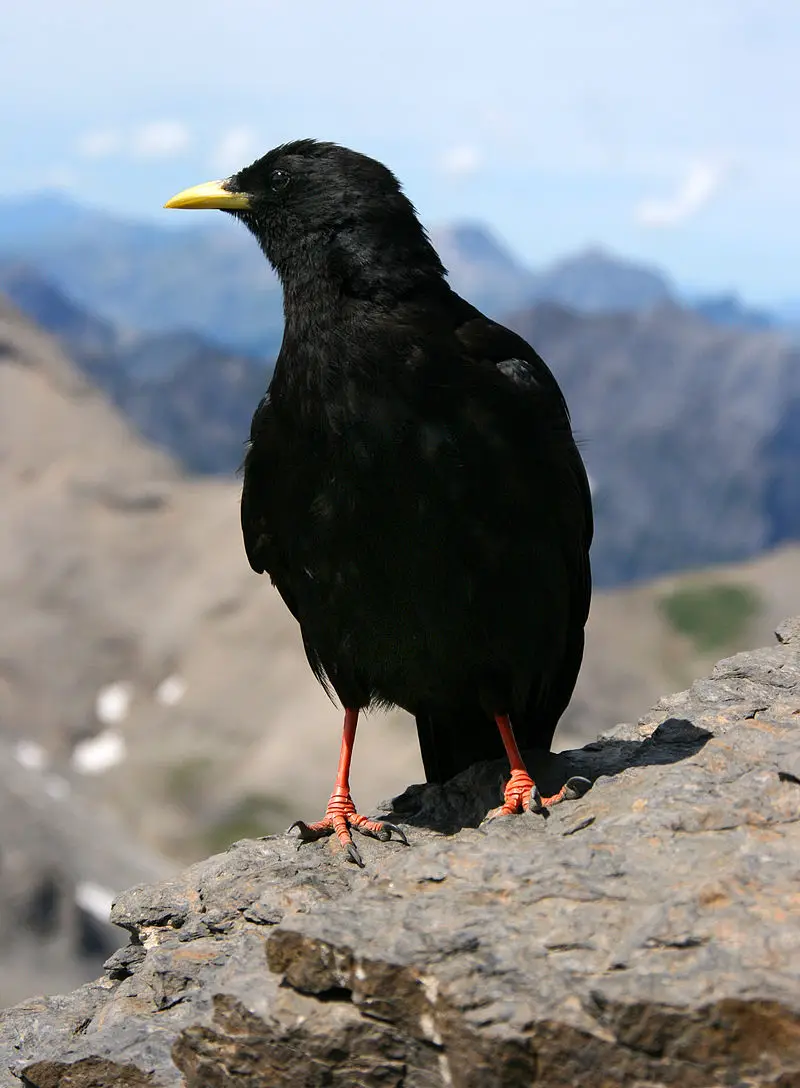
The Alpine chough is a bird in the crow family, distinguished by its yellow beak and black feathers. It has two subspecies that breed in high mountains of Spain, southern Europe and North Africa to Central Asia and Nepal.
This species can nest at incredible altitudes due to special adaptations such as their eggs having extra layers of membranes for protection against thin atmosphere on higher elevations.
The birds feed mainly on insects but have also been known to scavenge carrion or food left out by humans near their nesting sites.
They are agile fliers often seen gliding along cliffs with a characteristic “chack-chack” call which gives them their name.Scientific classification:
| Kingdom | Animalia |
| Phylum | Chordata |
| Class | Aves |
| Order | Passeriformes |
| Family | Corvidae |
| Genus | Pyrrhocorax |
| Species | P. graculus |
Also Featured In: Birds that Live in Montenegro, Most Common Birds of Corsica
12. Black-Necked Grebe

The Black-necked Grebe is a beautiful water bird belonging to the grebe family. It has an ochre coloured plumage with distinctive features which include extending behind its eyes and over its ear coverts.
The upper parts of this species are black, while their underparts and neck are white in colour.
During breeding season, males develop a dark grey crown on top of their head along with bright yellow facial stripes that run from the beak down to it’s chest area.
These birds feed mainly by diving underwater for insects, crustaceans, larvae, molluscs as well as small fish that they find in shallow waters or wetlands near freshwater lakes or streams.
They can often be spotted swimming alone but during winter months gather together creating large flocks due to mating activity taking place at these times.Scientific classification:
| Kingdom | Animalia |
| Phylum | Chordata |
| Class | Aves |
| Order | Podicipediformes |
| Family | Podicipedidae |
| Genus | Podiceps |
| Species | P. nigricollis |
Also Featured In: Birds Live in Tunisia, Armenian Birds You Should Know
13. Hazel Grouse
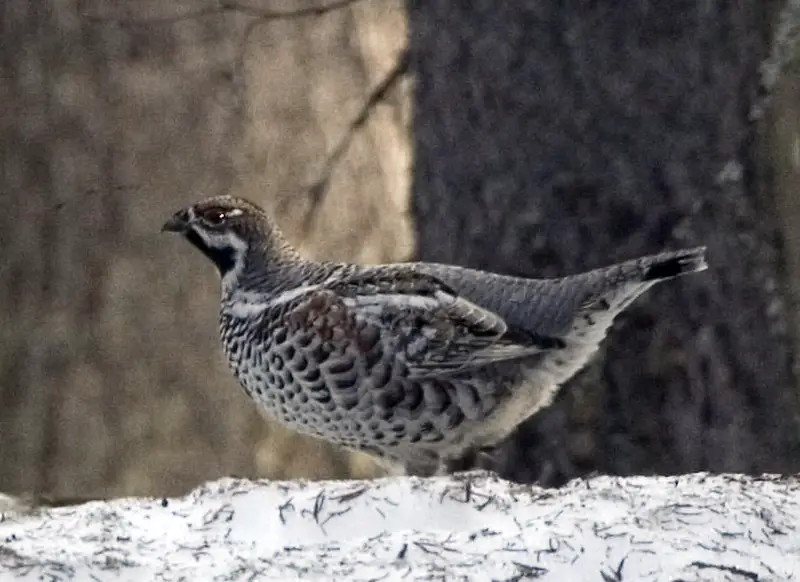
The Hazel Grouse is a small bird, belonging to the grouse family of birds. It is widely distributed across the Palearctic region, breeding in dense and damp mixed coniferous forests with some spruce trees.
This sedentary species can be found as far east as Hokkaido and as far west as eastern and central Europe.
It has greyish-brown upperparts with black barred wings while its underparts are pale buff or white heavily streaked by dark markings.
Its tail feathers have broad white tips giving it a distinctive appearance when seen from behind flying away through the air which may help explain why it’s sometimes referred to affectionately by Russians as “rabchick”.
The Hazel Grouse feeds mainly on buds, shoots, seeds of various plants but also insects during summer months for extra protein requirements necessary for growing chicks.Scientific classification:
| Kingdom | Animalia |
| Phylum | Chordata |
| Class | Aves |
| Order | Galliformes |
| Family | Phasianidae |
| Genus | Tetrastes |
| Species | T. bonasia |
Also Featured In: Native South Korean Birds, Birds You’ll Find in Hokkaido
14. Middle Spotted Woodpecker
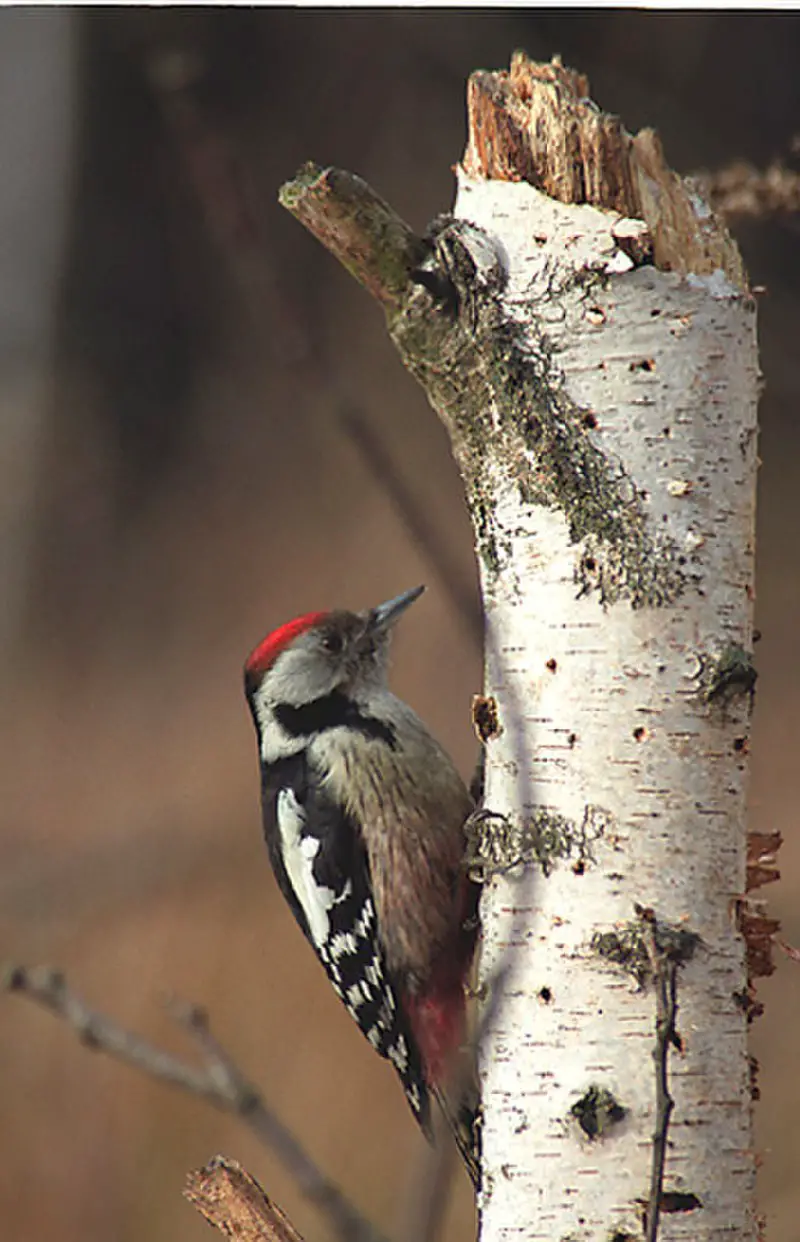
The Middle Spotted Woodpecker is a species of woodpecker native to Europe. It was formally described by the Swedish naturalist Carl Linnaeus in 1758 and given the binomial name Picus medius, with “medius” meaning intermediate – referring to its size compared to other woodpeckers.
They have black-and-white plumage with a distinctive red patch on their crowns, and are usually found around woodland areas where they feed on insects such as ants and beetles.
The males make loud drumming noises during mating season which can be heard for up to 500 meters away.
These birds generally live in tree cavities but will also nest inside old walls or buildings if available.
Conservation efforts are underway across Europe due to decreasing populations caused by habitat loss and fragmentation from human activity, making it an important species worth protecting.Scientific classification:
| Kingdom | Animalia |
| Phylum | Chordata |
| Class | Aves |
| Order | Piciformes |
| Family | Picidae |
| Genus | Dendrocoptes |
| Species | D. medius |
Also Featured In: Birds of Poland,
15. Boreal Owl
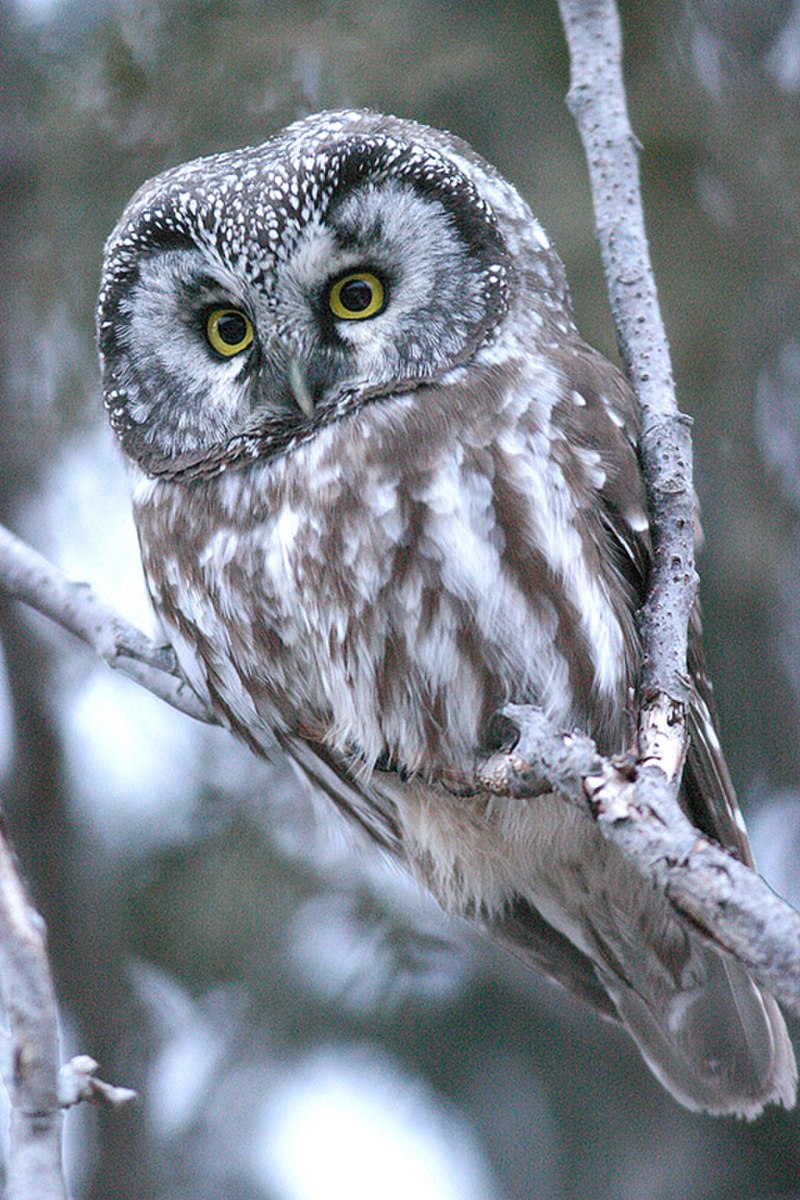
The Boreal Owl is a small, nocturnal bird of the Strigidae family commonly found in North America and Europe.
It’s also known as Tengmalm’s owl after Swedish naturalist Peter Gustaf Tengmalm or Richardson’s owl after Sir John Richardson.
The boreal owl has an elusive nature which makes it difficult to observe due to its shyness towards human activity during daylight hours.
Its feathers are dark brown with white spots on the wings, face and throat while its underbelly is light grey/brown with darker streaks along the sides.
They have long talons used for catching prey such as mice, voles and other small rodents making them effective hunters at night-time when they become more active seeking food sources away from humans.
Their habitat consists of coniferous forests where they can find shelter among large trees that offer nesting sites high up off of ground level keeping them safe from predators like foxes and coyotes who roam around looking for easy meals near the forest floor.Scientific classification:
| Kingdom | Animalia |
| Phylum | Chordata |
| Class | Aves |
| Order | Strigiformes |
| Family | Strigidae |
| Genus | Aegolius |
| Species | A. funereus |
Also Featured In: Most Common Lithuanian Birds, Birds You’ll Find in Night
16. Eurasian Pygmy Owl
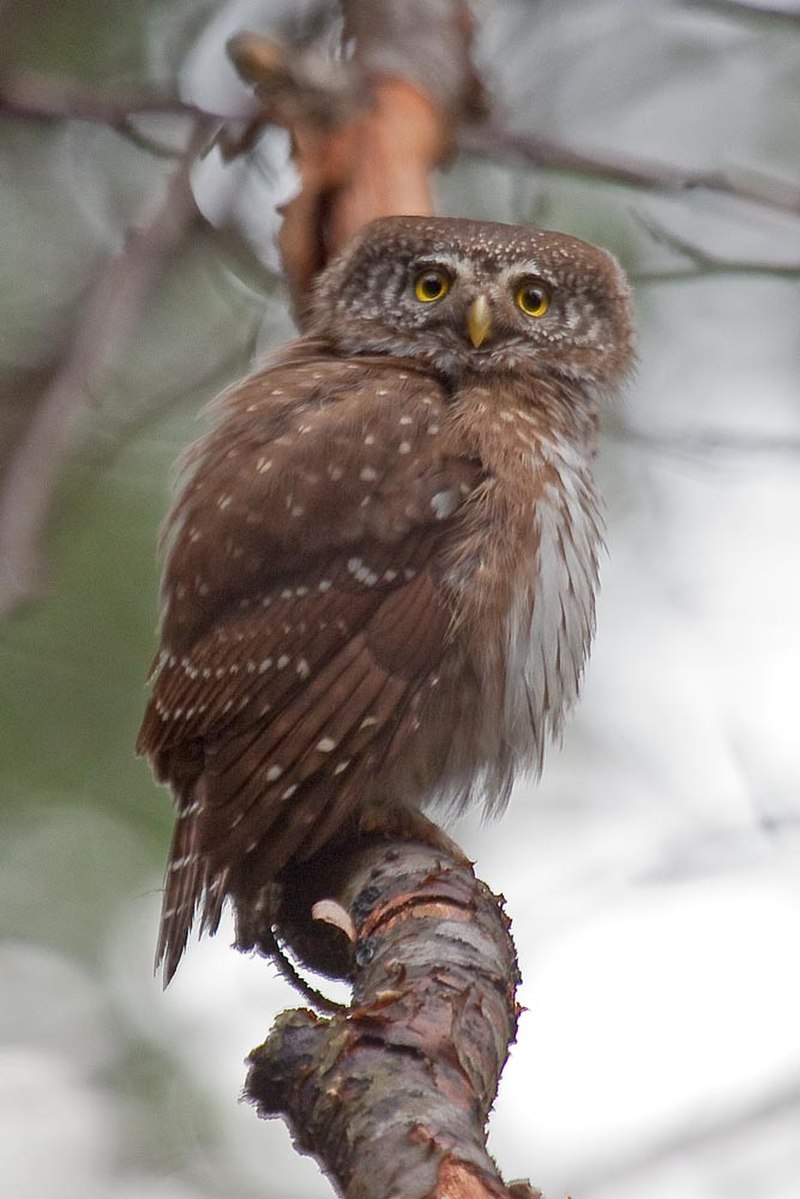
The Eurasian pygmy owl is an adorable, tiny bird species native to the boreal forests of Northern and Central Europe as well as Siberia.
It has a distinct dark reddish-grey brown coloration with spotted sides and half white ring around its neck.
These birds are considered sedentary, meaning that adult populations will remain in their range for most of the year except during seasonal migrations or dispersals.
They prefer coniferous woodland habitats where they can hunt small prey like insects, lizards and rodents from perches located on tree branches or trunks.
During breeding season male pygmy owls have been observed performing aerial displays involving jumps from one branch to another while calling out loudly in order to attract potential mates.Scientific classification:
| Kingdom | Animalia |
| Phylum | Chordata |
| Class | Aves |
| Order | Strigiformes |
| Family | Strigidae |
| Genus | Glaucidium |
| Species | G. passerinum |
17. Little Crake
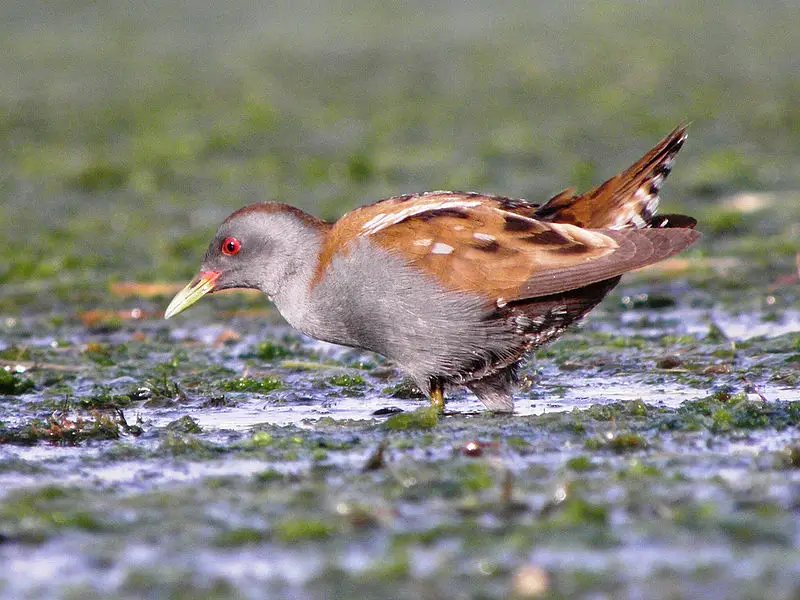
The Little Crake (Zapornia parva) is one of the smallest waterbirds in the family Rallidae. It breeds mainly in reed beds found throughout Europe and western Asia, migrating to Africa for winter months.
Measuring 17-19 cm long, these birds are slightly smaller than their close relative – the Spotted Crake – which can be identified by its lack of spots on its back.
With brown plumage, black eyes and a bill that curves downwards at tips; they also have yellow legs and feet as well as white underparts with some barring towards their underside.
They feed mainly on small invertebrates and insects while nesting near lakes or pools among dense vegetation such as sedges and bulrushes where they lay 4–7 eggs between May to July each year.Scientific classification:
| Kingdom | Animalia |
| Phylum | Chordata |
| Class | Aves |
| Order | Gruiformes |
| Family | Rallidae |
| Genus | Zapornia |
| Species | Z. parva |
18. Eurasian Three-Toed Woodpecker
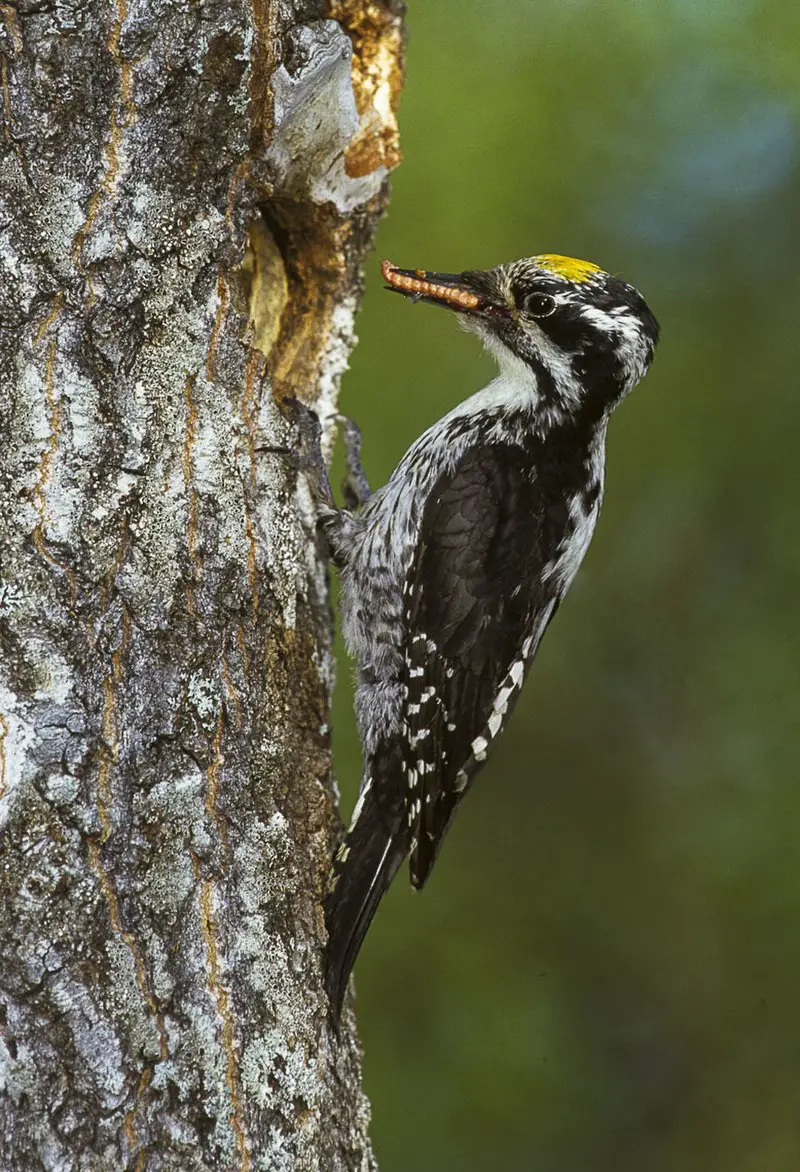
The Eurasian three-toed woodpecker is a beautiful medium sized bird found from northern Europe to Japan.
It was first formally described by Swedish naturalist Carl Linnaeus in 1758 and has since become an iconic species due to its distinctive black, white and red plumage as well as its adaptations for living in cold climates.
The Eurasian three-toed woodpecker lives mainly on coniferous trees such as spruce or fir, where it finds insect larvae under the bark of deadwood which forms part of its diet.
Its most recognizable feature is the bright yellow stripe running down each side of its head, making it easy to identify even at great distances.
This shy but tough creature can survive subzero temperatures with ease thanks to their thick feathers and specialised feet that allow them to cling onto icy branches.Scientific classification:
| Kingdom | Animalia |
| Phylum | Chordata |
| Class | Aves |
| Order | Piciformes |
| Family | Picidae |
| Genus | Picoides |
| Species | P. tridactylus |
19. Eurasian Penduline Tit
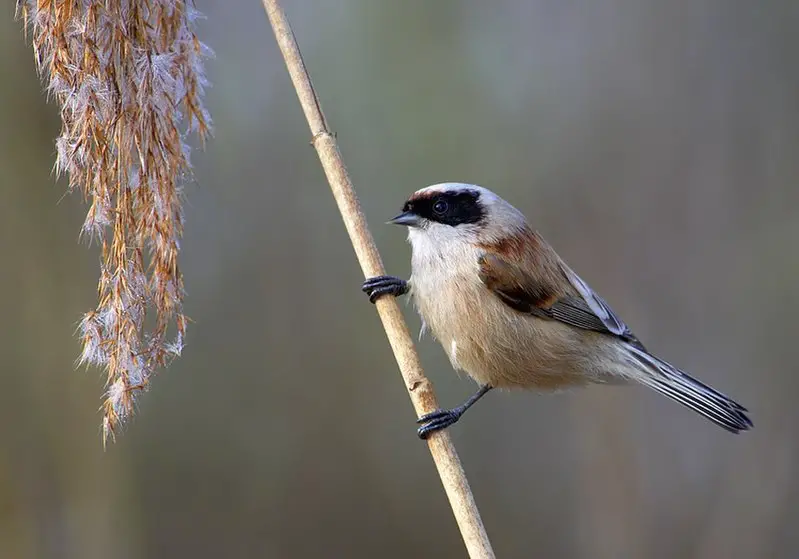
The Eurasian penduline tit is a passerine bird of the genus Remiz which can be found widely across the western Palearctic.
It migrates to more northern parts in summer, while staying resident in its southern range during winter months.
This species experienced an expansion of its breeding grounds throughout Western Europe between 1980s and 1990s, thus increasing its population significantly.
The Penduline Tit has various striking features like bright yellow underparts with black streaks on sides.
Greyish-brown upper part with white underside and pale eye line along head sides as well as distinctive tail nest made from fibers and mosses hanging from trees or shrubs like a pendulum hence their name ‘Penduline’.
These birds feed mainly on insects but also eat some seeds especially sunflower seeds making them popular garden visitors for many people.Scientific classification:
| Kingdom | Animalia |
| Phylum | Chordata |
| Class | Aves |
| Order | Passeriformes |
| Family | Remizidae |
| Genus | Remiz |
| Species | R. pendulinus |
Also Featured In: Birds of Morocco, Birds That Live in Iraq
20. Treecreepers
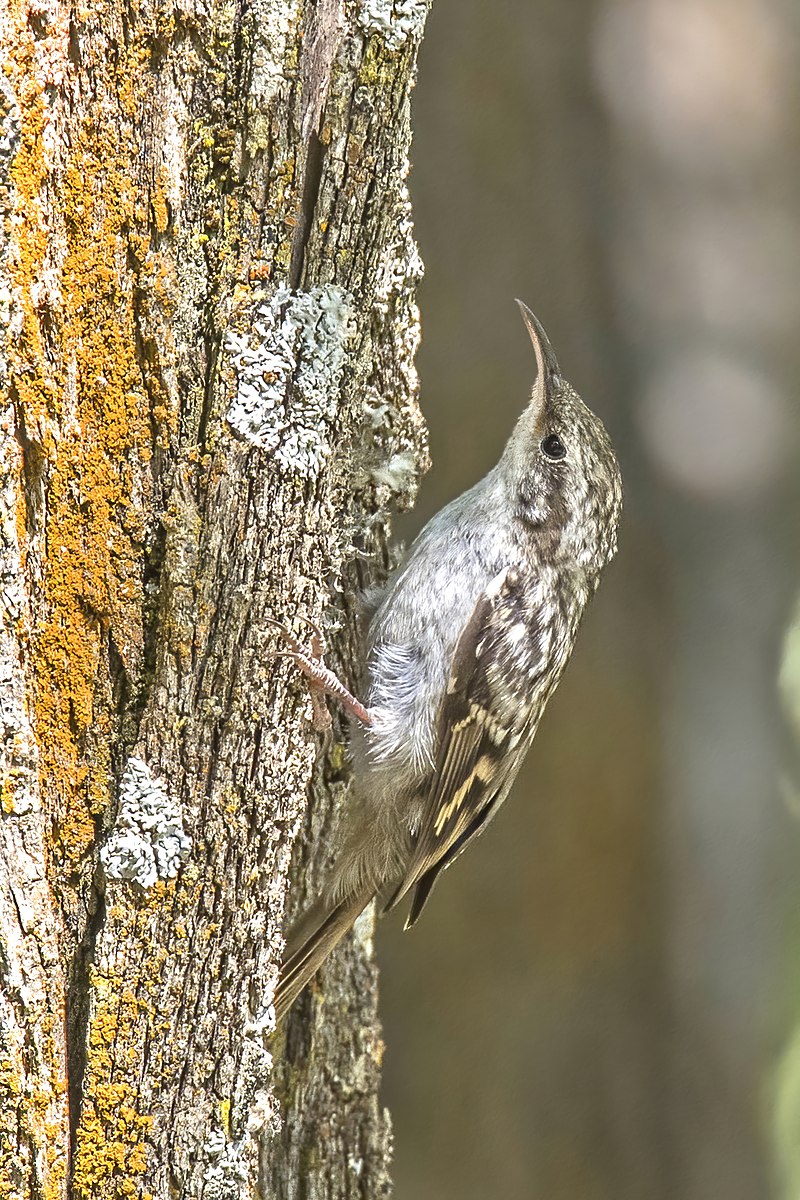
Treecreepers are small passerine birds found in wooded areas of the Northern Hemisphere and sub-Saharan Africa.
They have dull colored plumage, long curved bills, stiff tails and strong feet that help them to climb up tree trunks while searching for food such as insects and spiders.
The two genera Certhia and Salpornis include eleven species which can be identified by their distinct call – a high pitched ‘tsee-tsit’.
Treecreepers build cup shaped nests on trees usually near the base or middle trunk using mosses, lichens, grasses with leaves inside them to provide insulation from cold temperatures.
These birds also use bark crevices during winter months when they shelter in groups together against extreme weather conditions.Scientific classification:
| Kingdom | Animalia |
| Phylum | Chordata |
| Class | Aves |
| Order | Passeriformes |
| Superfamily | Certhioidea |
| Family | Certhiidae Leach, 1820 |
Also Featured In: Flocks Birds around Us, Bulgarian Birds
21. Black-Tailed Godwit
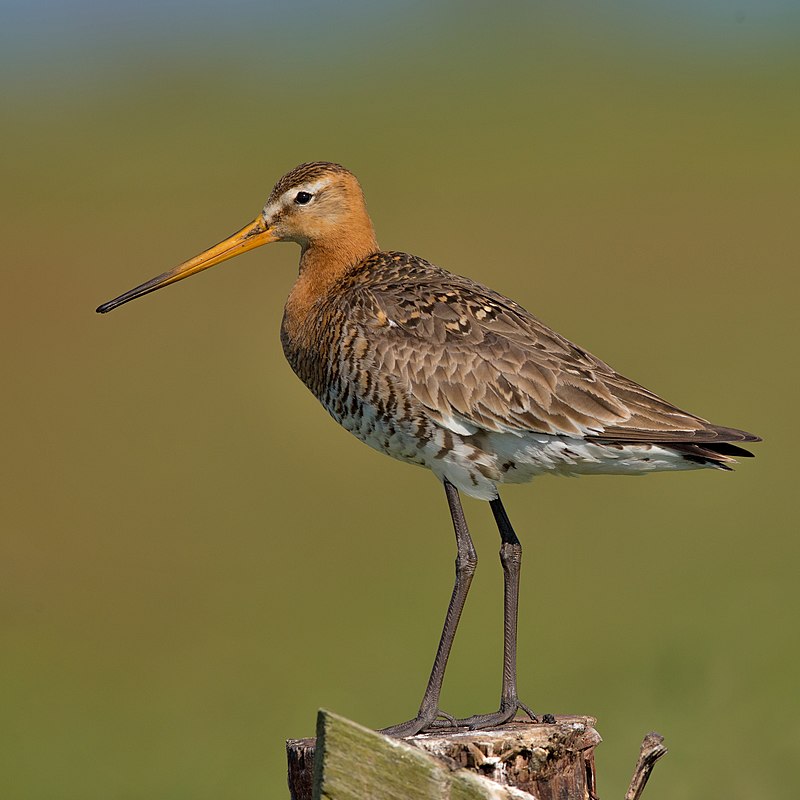
The Black-tailed Godwit is a species of large shorebird that was first described by Carl Linnaeus in 1758.
These beautiful birds have an orange head, neck and chest during breeding season while they turn to grey-brown coloration in winter.
They are easily identifiable due their black and white wingbar throughout the year. As for its habitat, these godwits breed mostly on Iceland but also across Europe, eastward through Asia Minor all the way to Mongolia; some even winter further south in Africa or India.
The Godwit has adapted well to human presence as it can be found close to wetlands near farms or villages where plenty of food is available from ploughed fields.
It’s really amazing how such a majestic bird with colorful plumage manages so successfully at this day and age.Scientific classification:
| Kingdom | Animalia |
| Phylum | Chordata |
| Class | Aves |
| Order | Charadriiformes |
| Family | Scolopacidae |
| Genus | Limosa |
| Species | L. limosa |
Also Featured In: Birds in Sri Lanka, Estuaries Birds
22. Spotted Flycatcher
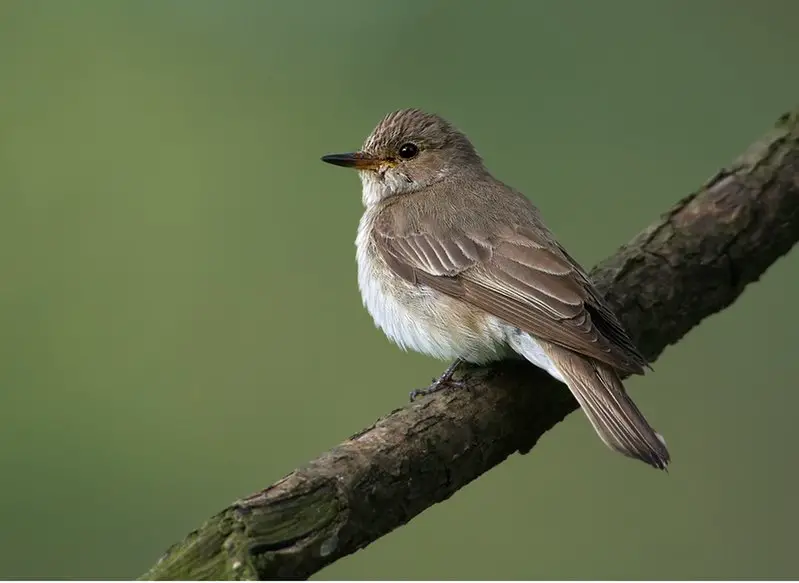
The Spotted Flycatcher is a small passerine bird belonging to the Old World flycatcher family. It has grey-brown upperparts and whitish underparts, with two white wing bars on its wings and tail.
The adult also has an eye ring of pale brown or buff coloration around their eyes. This species breeds in most parts of Europe, Siberia and Palearctic regions, before migrating south for wintering in Africa and South Western Asia.
Unfortunately it is declining due to loss of habitat caused by deforestation and intensive agriculture practices over much of its range but some conservation measures have been taken which are helping this species recover somewhat from these declines.Scientific classification:
| Kingdom | Animalia |
| Phylum | Chordata |
| Class | Aves |
| Order | Passeriformes |
| Family | Muscicapidae |
| Genus | Muscicapa |
| Species | M. striata |
Also Featured In: Birds of Belgium, Most Popular Birds in Mallorca
23. Eurasian Bittern
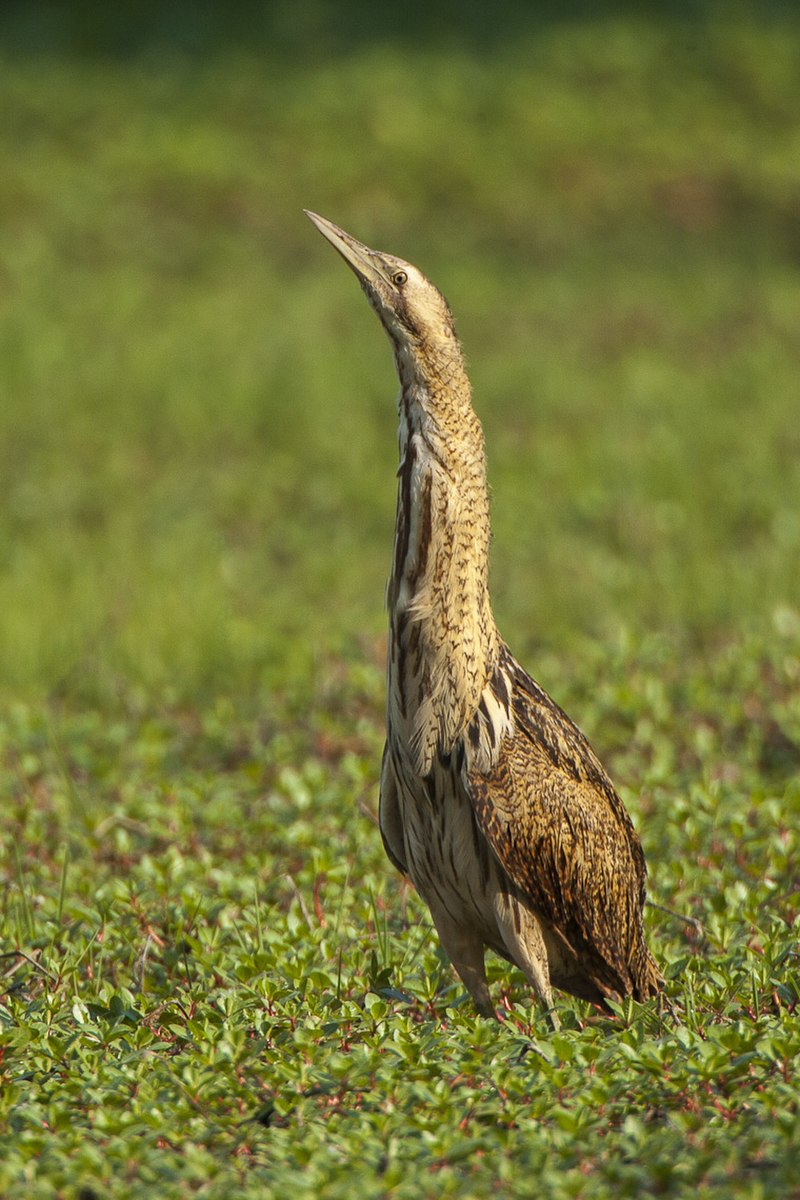
The Eurasian Bittern is a large and secretive wading bird of the heron family. It has two subspecies, one found in Europe and northern Africa, while another can only be seen in parts of southern Africa.
This migratory species spends its winters southwards from its breeding grounds across much of Europe to eastern Asia as far south as China.
The male bitterns are easily identifiable by their loud booming calls that they make during mating season which is usually between April-May.
They have brown striped plumage with lighter underparts which helps them blend into marshy habitats where they feed on fish and amphibians among other prey items.
Despite having a relatively wide distribution range, this species remains threatened due to habitat destruction caused by human activities such as wetland drainage for agricultural use or development projects like dams etc., making conservation efforts necessary for securing their future survival.Scientific classification:
| Kingdom | Animalia |
| Phylum | Chordata |
| Class | Aves |
| Order | Pelecaniformes |
| Family | Ardeidae |
| Genus | Botaurus |
| Species | B. stellaris |
Also Featured In: Birds of Czech Republic, Large African Birds You Need to Know
24. River Warbler
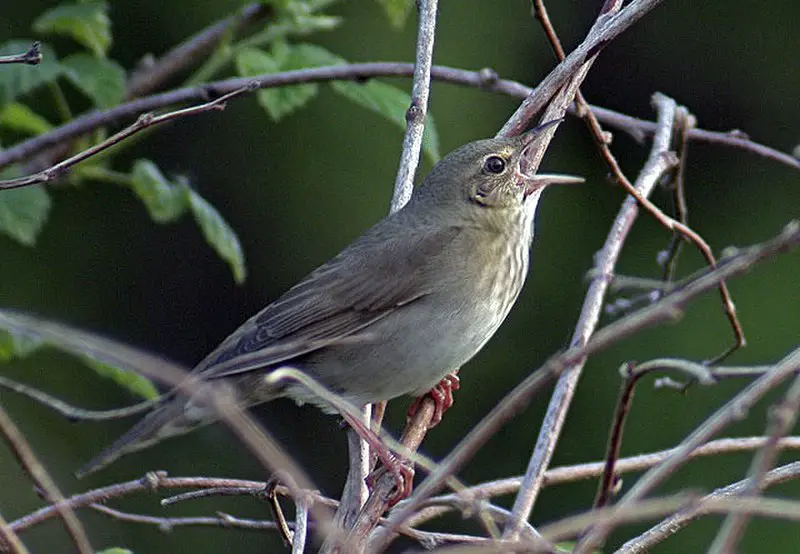
The River Warbler is a small bird in the grass warbler genus Locustella. It can be found breeding in eastern and central Europe, as well as throughout the western Palearctic region.
During winter it migrates to inland Southern Africa from around the Zambezi River all the way down south of Pretoria.
Its name comes from its Latin diminutive “locusta” meaning grasshopper due to its habit of foraging for insects on low vegetation near water bodies like rivers or streams.
This bird has olive-brown upperparts with whitish underparts which have black streaks across them.
These streaked feathers help it blend into its natural habitat making it difficult to spot against reeds and tall grasses growing along riverbanks and wetland areas where they often frequent during migration season looking for food sources such as flying insects or small crustaceans that inhabit those environments.Scientific classification:
| Kingdom | Animalia |
| Phylum | Chordata |
| Class | Aves |
| Order | Passeriformes |
| Family | Locustellidae |
| Genus | Locustella |
| Species | L. fluviatilis |
25. Eurasian Golden Oriole
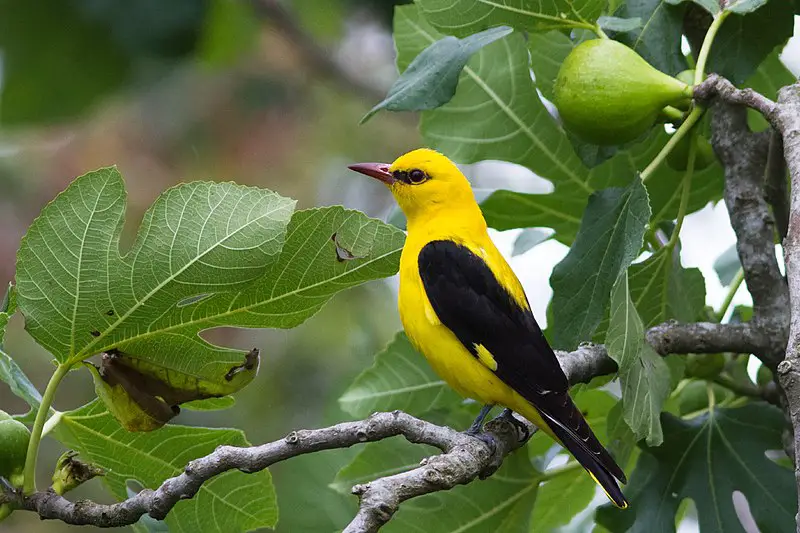
The Eurasian golden oriole is a beautiful bird belonging to the Old World oriole family of passerine birds that breed in temperate climates of the Northern Hemisphere.
It migrates from Europe and Palearctic during summer season, and spends its winter months in central and southern Africa.
These birds have an impressive range with large populations which appear to be stable or increasing across much of their range due to conservation efforts.
They are mostly found near forests, woodlands, riverbanks and meadows where they feed on fruits as well as insects such as caterpillars, beetles, grasshoppers etc.
The males can easily be identified by their bright yellow plumage while females are more olive coloured.
All in all these stunningly colourful creatures add vibrancy to our environment.Scientific classification:
| Kingdom | Animalia |
| Phylum | Chordata |
| Class | Aves |
| Order | Passeriformes |
| Family | Oriolidae |
| Genus | Oriolus |
| Species | O. oriolus |
Also Featured In: Most Beautiful birds of Greece, Birds That Live in the Jungle
26. Woodchat Shrike
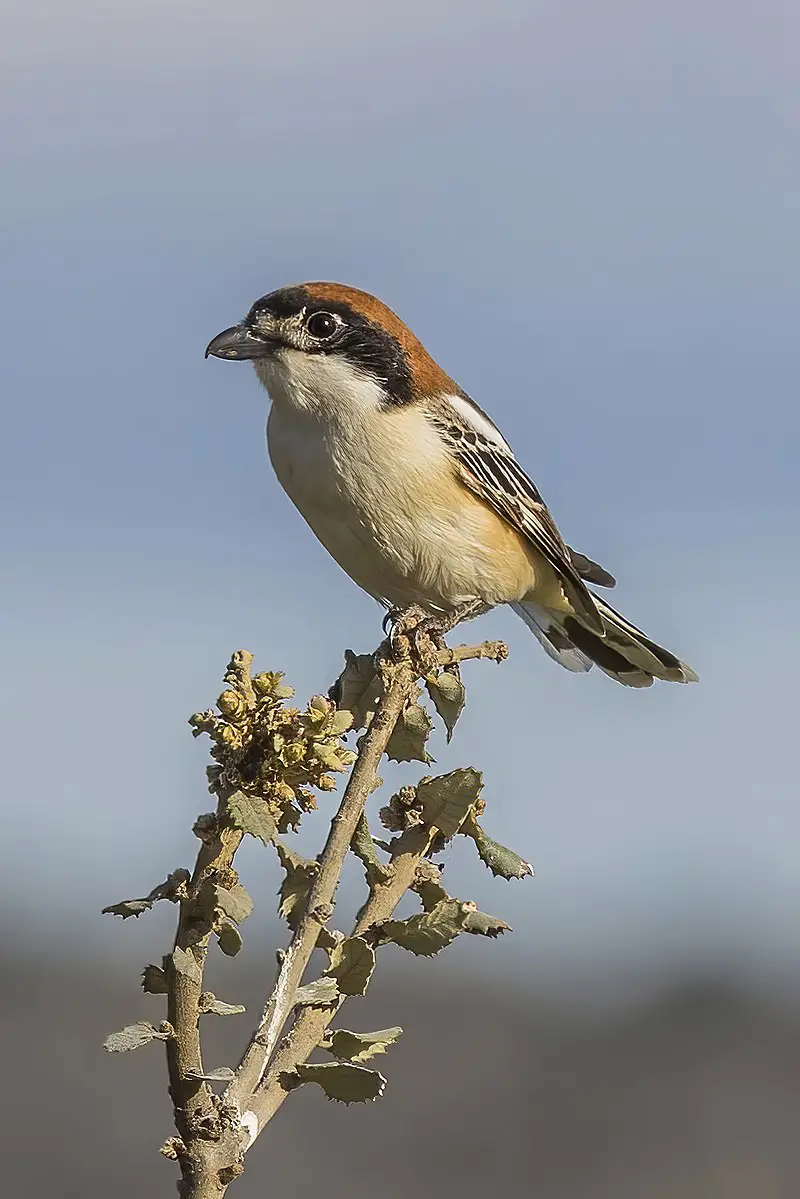
The Woodchat Shrike is a unique species of bird belonging to the shrike family. It has an unmistakable red-brown crown and nape that make it easily distinguishable from other birds.
This species mainly feeds on insects, but will also take small vertebrates if they are available.
They have adapted well to living in open wooded areas with scattered trees such as orchards, where there’s plenty of bare ground for them to hunt on.
During breeding season the Woodchat Shrikes can be found throughout Southern Europe, Middle East and Northwest Africa; while during wintertime these fascinating creatures migrate south towards tropical regions of Africa for warmer weather conditions.
All in all this species makes a fantastic addition to any outdoor environment – so why not give them some extra attention next time you spot one?Scientific classification:
| Kingdom | Animalia |
| Phylum | Chordata |
| Class | Aves |
| Order | Passeriformes |
| Family | Laniidae |
| Genus | Lanius |
| Species | L. senator |
Also Featured In: Birds You’ll Find in Albania, Common Cornwall Birds
27. Common House Martin
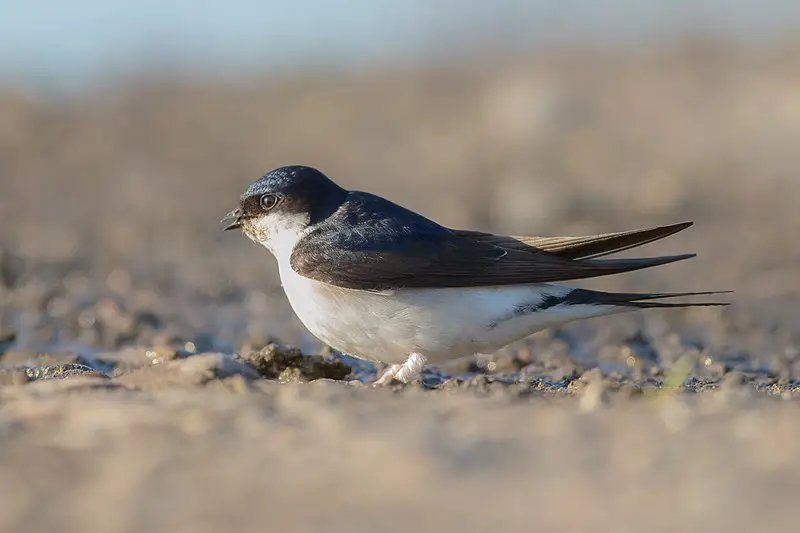
The Common House Martin is a beautiful migratory bird of the swallow family. It breeds in Europe, North Africa and across the Palearctic region, then winters in sub-Saharan Africa and tropical Asia.
This species feeds on insects caught while flying through its habitat.
Its main food source changes depending on where it is located at any given time as it follows warmer climates with more abundance of flies during winter months when migrating southward from its breeding grounds up north.
The house martin has an unmistakable appearance; they have glossy blue upperparts and white underparts that contrast beautifully against their black wingspan which can reach up to 18 cm long.Scientific classification:
| Kingdom | Animalia |
| Phylum | Chordata |
| Class | Aves |
| Order | Passeriformes |
| Family | Hirundinidae |
| Genus | Delichon |
| Species | D. urbicum |
Also Featured In: Common Birds in the Cities, Birds that Make Mud Nests
28. Little Bittern
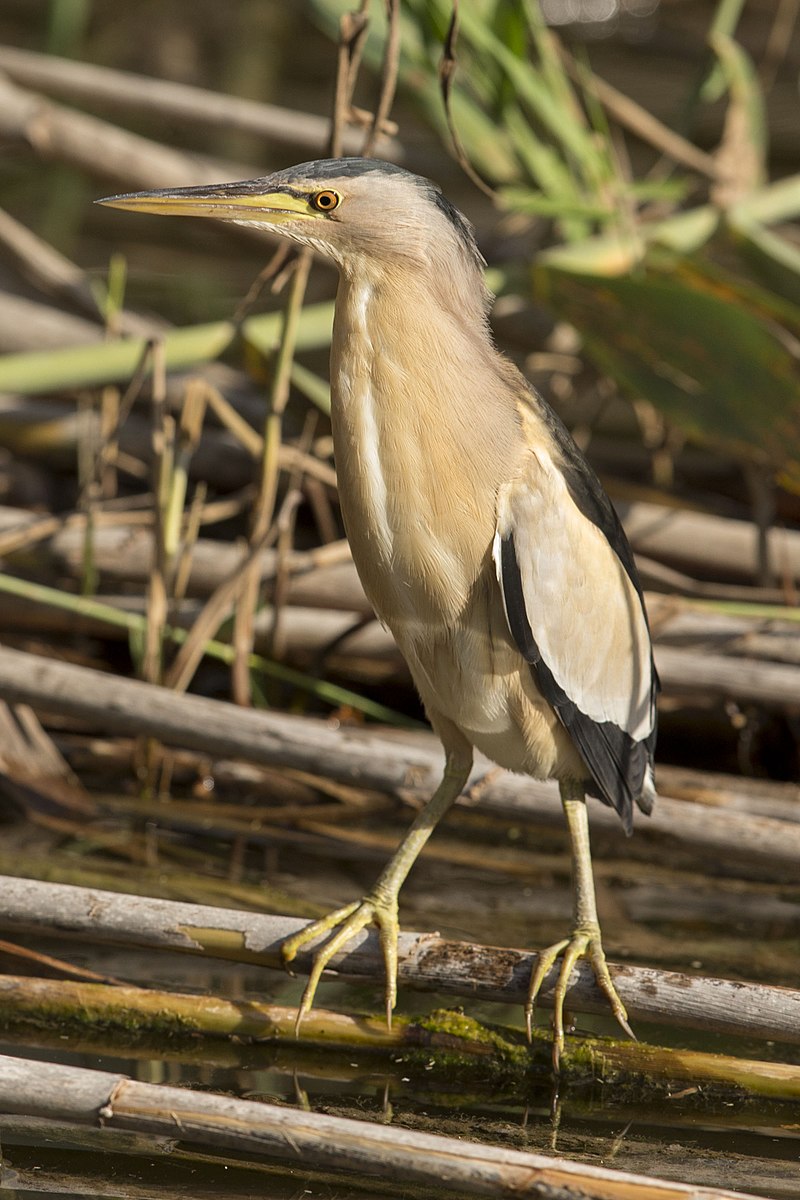
The Little Bittern is a wading bird in the heron family, Ardeidae. Its scientific name Ixobrychus minutus comes from Ancient Greek ixias and Latin for “small” respectively.
It breeds across Africa, central and southern Europe, western and southern Asia as well as Madagascar.
The Little bittern has an orange-brown back with streaks of black while its underside is white with dark stripes running down it sides giving it excellent camouflage to hide amongst reeds or tall grasses near shallow water bodies such as wetlands where they search for food like fish, frogs etc..
They are usually very shy birds but during mating season males make loud croaking calls that can be heard up to 400m away.
These beautiful little creatures have sadly been classified by International Union for Conservation of Nature (IUCN) Red List of Threatened Species due their declining population caused mainly by habitat destruction through agricultural practices or draining of wetland areas which leads to loss if nesting sites putting them at risk.Scientific classification:
| Kingdom | Animalia |
| Phylum | Chordata |
| Class | Aves |
| Order | Pelecaniformes |
| Family | Ardeidae |
| Genus | Ixobrychus |
| Species | I. minutus |
Also Featured In: Birds found in portugal, Common Birds of Portugal
29. Spotted Crake
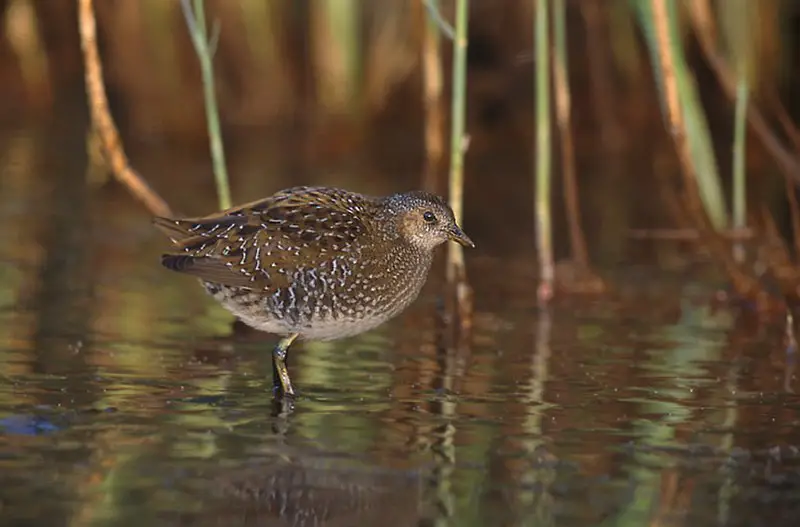
The Spotted Crake is a small waterbird from the family Rallidae, with its scientific name derived from Venetian terms for small rails.
It breeds in marshes and sedge beds across temperate Europe into western Asia and nests on dry locations within marsh vegetation; laying 6-15 eggs.
This species migrates to Africa and Pakistan during winter season. The size of an adult bird can range up to 22.5 cm long, making it one of the smaller birds amongst others in its family but still beautiful nonetheless.
With rich chestnut brown upperparts contrasted by white underparts, they are definitely easy to spot when flying around or simply sitting atop branches nearby ponds or wetlands.Scientific classification:
| Kingdom | Animalia |
| Phylum | Chordata |
| Class | Aves |
| Order | Gruiformes |
| Family | Rallidae |
| Genus | Porzana |
| Species | P. porzana |
Also Featured In: Best Birds Watching in Austria,
30. Alpine Accentor
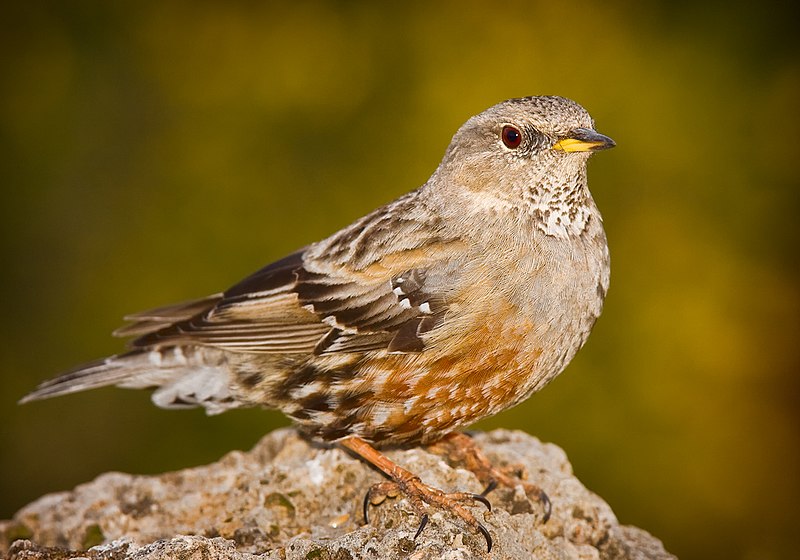
The Alpine Accentor is a small passerine bird belonging to the Prunellidae family. It is native to Eurasia and North Africa, first described by Austria naturalist Giovanni Antonio Scopoli in 1769 with its type locality being Carinthia region of southern Austria.
The species name “collaris” was derived from Latin which means “of a collar” referring to the black line running across their white breast feathers resembling that of a collar.
They are approximately 12-13 cm long and have rounded wings, short tails, thick bill and greyish brown upperparts as well as whitish under parts with yellow tinge on flanks.
They feed primarily on insect larvae found near ground level or other invertebrates such as spiders and worms scattered around alpine meadows where they breed during summer months between May – August before migrating southwards for winter season when food sources become scarce above snowline at higher altitudes.Scientific classification:
| Kingdom | Animalia |
| Phylum | Chordata |
| Class | Aves |
| Order | Passeriformes |
| Family | Prunellidae |
| Genus | Prunella |
| Species | P. collaris |
Also Featured In: Common Birds Found in Switzerland,
31. Red-Breasted Flycatcher
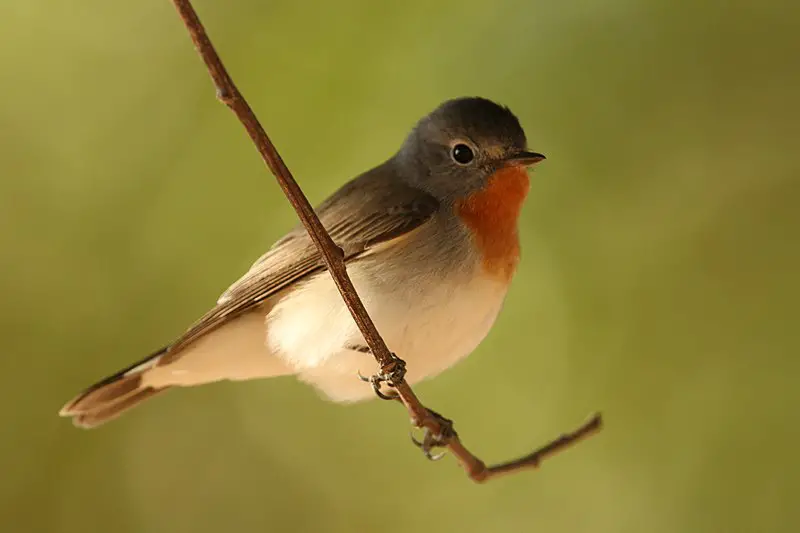
The Red-breasted Flycatcher is a small passerine bird belonging to the Old World flycatcher family. It has a red breast and grey upperparts, with white underparts.
During summertime it can be found breeding in eastern Europe and across Central Asia before migrating southwards to spend winter in South Asia.
In western Europe, it is quite common as a passage migrant due its different migration direction compared to the collared flycatcher which breeds further east.
Its diet consists mainly of insects such as flies, beetles and grasshoppers that are caught on short sallies from perches or trees near water bodies like rivers or ponds where they breed too.Scientific classification:
| Kingdom | Animalia |
| Phylum | Chordata |
| Class | Aves |
| Order | Passeriformes |
| Family | Muscicapidae |
| Genus | Ficedula |
| Species | F. parva |
Also Featured In: Kyrgyzstan Birds, Birds of Taiga
32. Tundra Swan
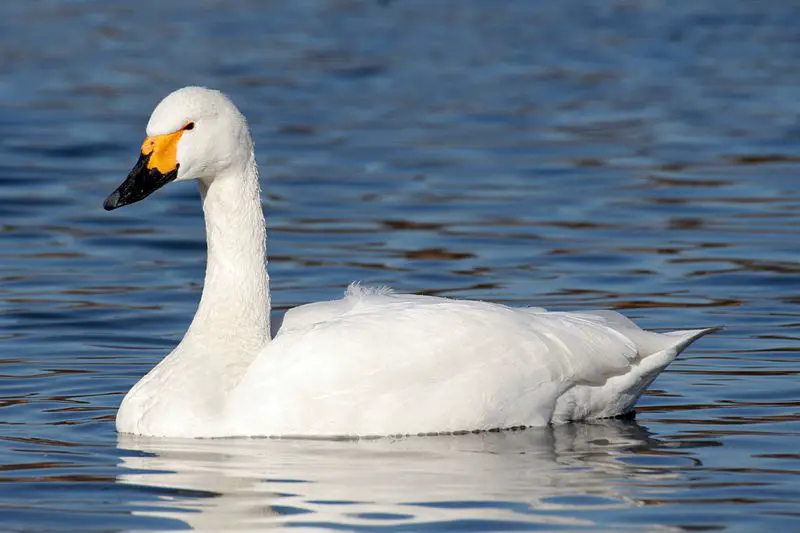
The Tundra swan is a small species of swan found in the Holarctic region. It can be divided into two separate taxa, Bewick’s Swan and Whistling Swan.
The former inhabits the Palearctic area while the latter resides near North America.
These birds are typically white with black bills and eyes but their legs vary from yellow to greyish-black depending on which subspecies they belong to.
They feed mainly on aquatic plants such as algae, roots, tubers and various types of seeds.
During migration these birds fly together in large flocks that may contain hundreds or even thousands of individuals at one time.
This majestic bird is an important part of many wetland ecosystems around the world where it plays a vital role in controlling vegetation growth as well as dispersing nutrients across its habitat range.Scientific classification:
| Kingdom | Animalia |
| Phylum | Chordata |
| Class | Aves |
| Order | Anseriformes |
| Family | Anatidae |
| Genus | Cygnus |
| Species | C. columbianus |
Also Featured In: Ireland Birds, Most Common Lake Birds
33. Grey-Headed Woodpecker
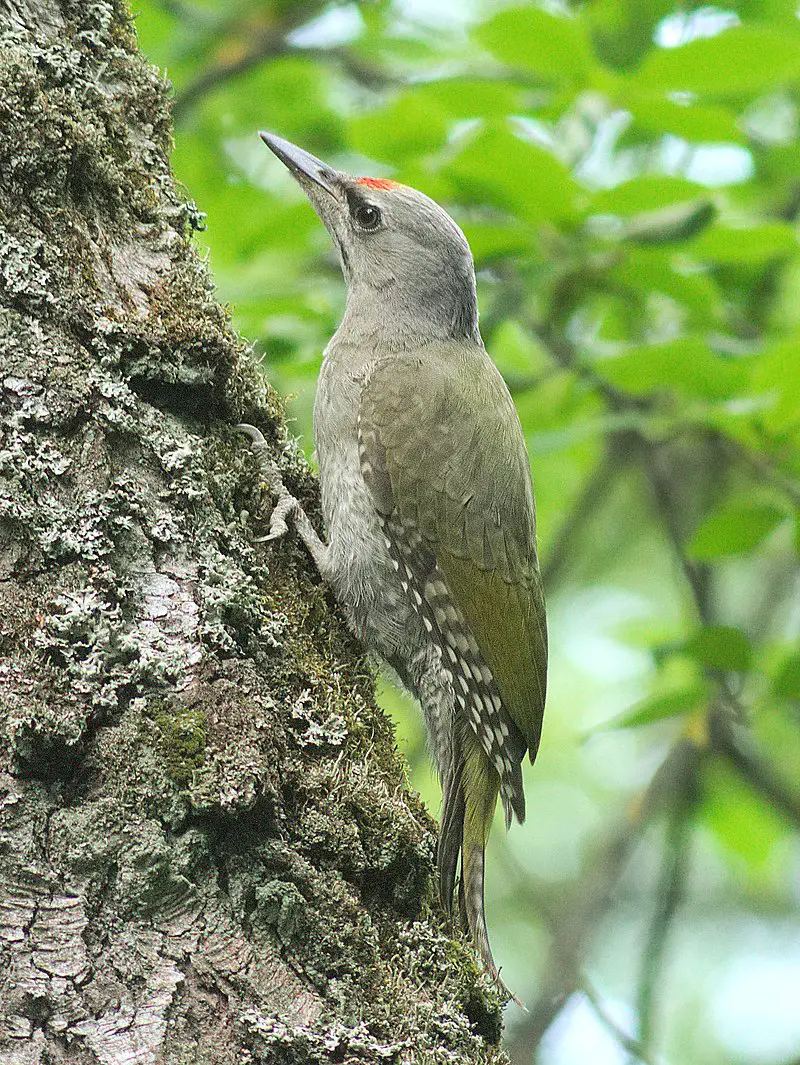
The Grey-headed Woodpecker is a species of bird found in the Eurasian region, belonging to the family Picidae.
It has distinctive grey feathers on its head and back, making it easily identifiable compared to other woodpeckers.
This species can be seen across large parts of Europe and Central Asia, all the way up into Northern Siberia.
The diet consists mainly of small insects such as ants and beetles which they locate by tapping or drilling holes into tree bark looking for larvae underneath; this behaviour also helps them find nesting cavities within trees for their homes.
They are very social creatures that like to live in groups with many birds from different generations living together at once.Scientific classification:
| Kingdom | Animalia |
| Phylum | Chordata |
| Class | Aves |
| Order | Piciformes |
| Family | Picidae |
| Genus | Picus |
| Species | P. canus |
Also Featured In: Luxembourg birds,
34. Ring Ouzel
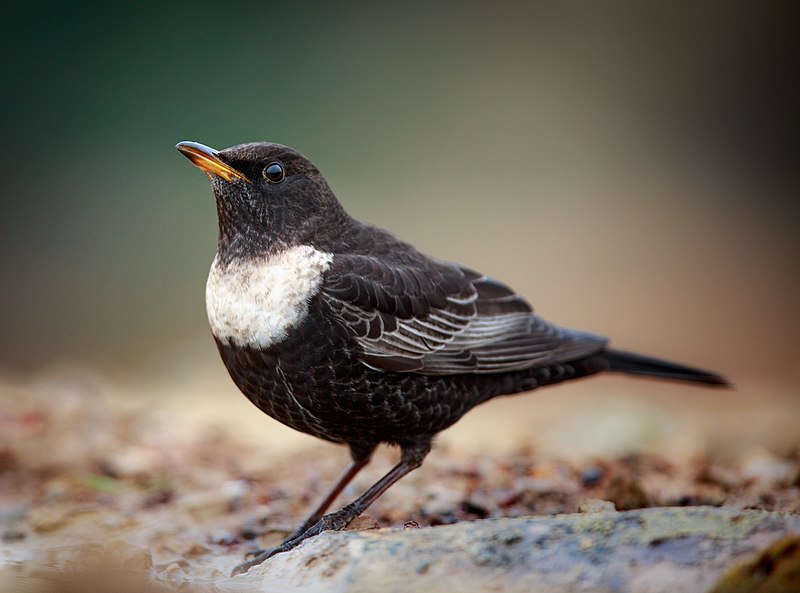
The Ring Ouzel is a medium-sized thrush that stands between 23 and 24 centimetres tall. It has a predominantly black plumage, with males featuring a white crescent across their chest.
Females are browner in colour and young birds may lack the pale markings altogether. This species can be found mainly throughout Europe but also inhabits parts of Asia Minor and North Africa during the winter months.
Its diet consists primarily of insects, berries, fruits, earthworms and snails which it finds while foraging on woodland floors or in rocky areas around streams or rivers.
The ring ouzel nests near its food sources – typically amongst boulders along mountain streams – where they lay three to five eggs at once per nest every springtime season before heading south again come autumn time.Scientific classification:
| Kingdom | Animalia |
| Phylum | Chordata |
| Class | Aves |
| Order | Passeriformes |
| Family | Turdidae |
| Genus | Turdus |
| Species | T. torquatus |
Also Featured In: Andorra birds, Moorland Birds You Need to Know
35. Tawny Pipit
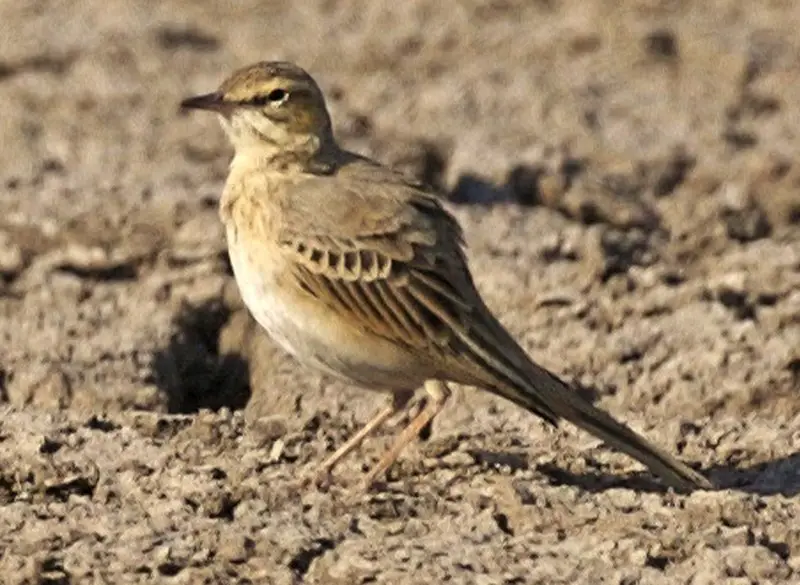
The Tawny Pipit is a medium-large passerine bird that breeds across much of the central Palearctic region.
It has an impressive range, stretching from northwest Africa and Portugal to Central Siberia and Inner Mongolia.
During winter months it migrates southwards to tropical Africa and India where it spends its time in grasslands.
Its scientific name ‘Anthus campestris’ comes from Latin; Anthus meaning ‘smallbird’, while Campestris means “of open country or fields”.
The Tawny Pipit displays bold streaks on its back with sandy brown upper parts which blend into white underparts.
It can be identified by its distinctive song too – consisting of several rising notes followed by one lower trill note at the end.Scientific classification:
| Kingdom | Animalia |
| Phylum | Chordata |
| Class | Aves |
| Order | Passeriformes |
| Family | Motacillidae |
| Genus | Anthus |
| Species | A. campestris |
Also Featured In: Common Birds of Mumbai,
36. Collared Flycatcher
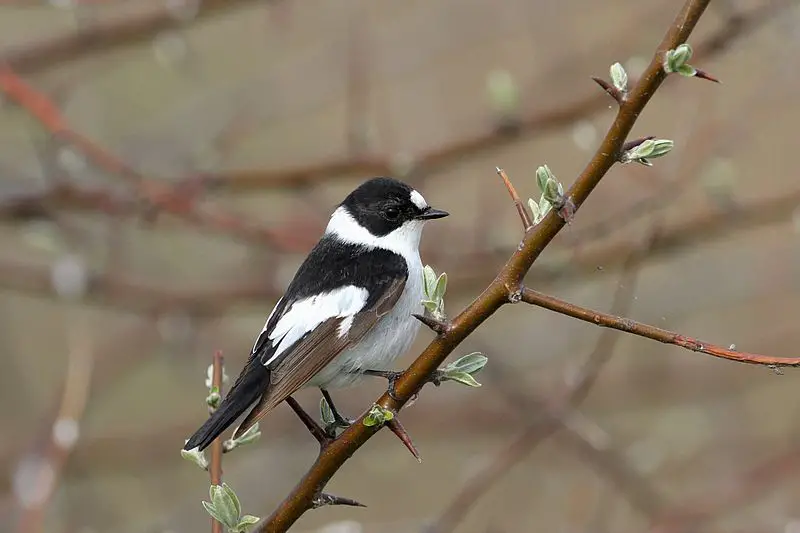
The Collared Flycatcher is a small passerine bird that belongs to the Old World flycatcher family.
It can be found breeding in southeastern Europe, as well as isolated populations on Gotland and Öland in Sweden’s Baltic Sea islands, Eastern France, the Balkan Peninsula and Ukraine.
During winter months it migrates southwards, spending time in subtropical regions such as northern Africa and parts of Asia.
The collared flycatcher has predominantly black-and-white plumage with a pale collar around its neck giving it its name – although some males have been known to display chestnut or reddish feathers during mating season.
Its diet mainly consists of insects which are caught by hawking from an exposed perch before being quickly swallowed whole.Scientific classification:
| Kingdom | Animalia |
| Phylum | Chordata |
| Class | Aves |
| Order | Passeriformes |
| Family | Muscicapidae |
| Genus | Ficedula |
| Species | F. albicollis |
Also Featured In: Flycatchers Species, Birds Commonly Found in Slovenia
37. Sand Martin
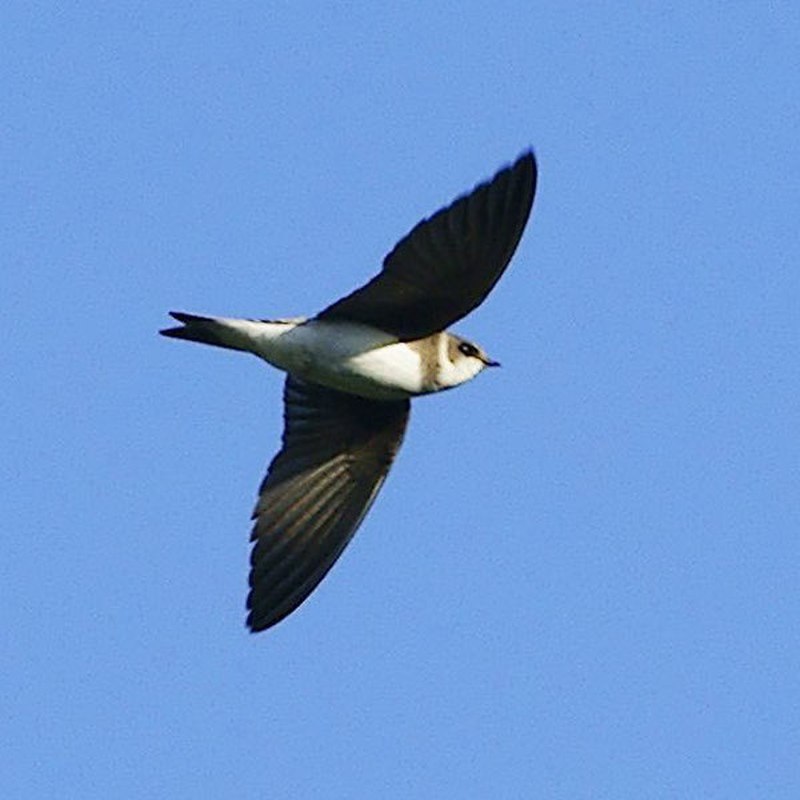
The sand martin, also known as the bank swallow or collared sand martin, is a migratory bird belonging to the swallow family.
It has an extensive summer range that covers most of Europe and other parts of Palearctic region such as North America.
During winter season it can be found in tropical Africa and India. The length of this small passerine bird varies from 12-14 cm with wingspan stretching up to 24 cm long.
Its back feathers are brownish grey while its belly is white in colour with dark streaks on sides.
Sand Martin feeds mainly on flying insects which they catch during their flight along rivers or over wetlands making use of their swift flight abilities at low altitudes foraging food items like flies and mosquitoes midair.Scientific classification:
| Kingdom | Animalia |
| Phylum | Chordata |
| Class | Aves |
| Order | Passeriformes |
| Family | Hirundinidae |
| Genus | Riparia |
| Species | R. riparia |
Also Featured In: Swallows Species, Turkey Birds You Should Know
38. Common Redstart
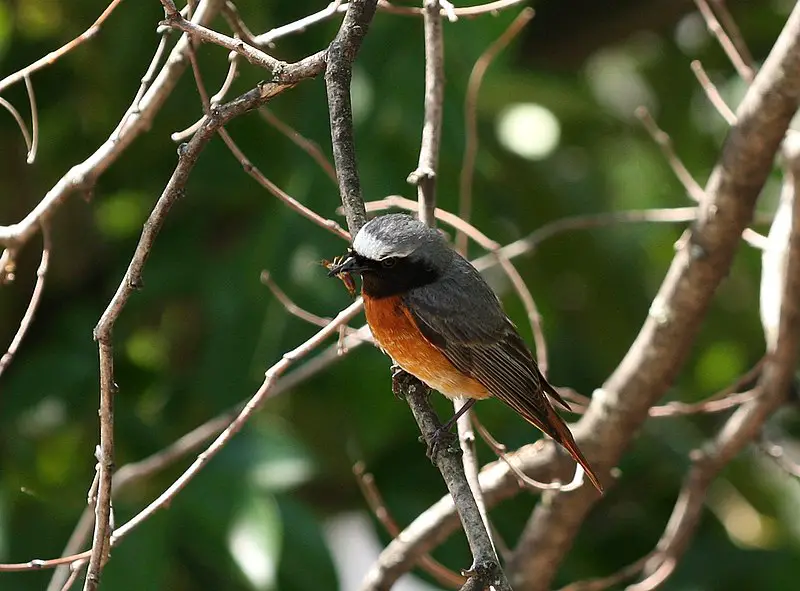
The Common Redstart is a small passerine bird found in the Phoenicurus genus. It was once classified as part of the thrush family but it has since been identified as an Old World flycatcher.
The species was first formally described by Swedish naturalist Carl Linnaeus in 1758 and is known for its predominantly reddish-orange plumage, hence its name red start.
This beautiful little bird inhabits open woodlands across Europe, Asia and northern Africa where they feed on insects such as flies, moths and beetles which they catch while flying or hovering over vegetation with their wings spread out like fans.
They also enjoy consuming fruits when available during autumn months – making them a welcome visitor to any garden.
These birds are not only aesthetically pleasing but also beneficial to local ecosystems due to their diet of insect pests that can be harmful to plants.Scientific classification:
| Kingdom | Animalia |
| Phylum | Chordata |
| Class | Aves |
| Order | Passeriformes |
| Family | Muscicapidae |
| Genus | Phoenicurus |
| Species | P. phoenicurus |
Also Featured In: birds of orange, Belarus Birds You Should Know
39. Icterine Warbler
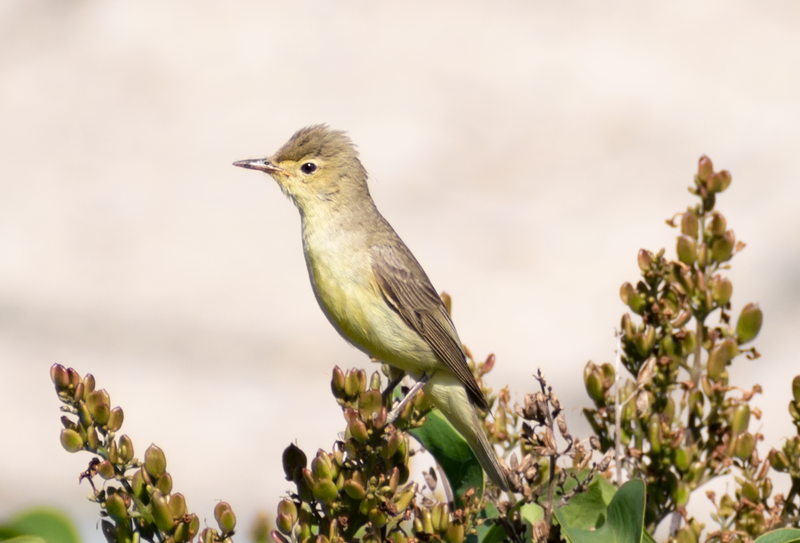
The Icterine warbler, also known as the Hippolais icterina, is a migratory bird that breeds in most parts of mainland Europe, except for the southwest region, where the melodious warbler replaces it.
This bird has a large head, long wings, and a short, square-ended tail. It is a fairly big warbler with a broad-based bill that helps it feed on insects. The Icterine warbler spends its winters in sub-Saharan Africa.
This bird belongs to the tree warbler genus Hippolais and is known for its distinctive yellow plumage.
Despite their bright colors, they can be quite difficult to spot, as they prefer to hide in dense foliage. They are known for their frequent singing, which is often loud and melodious.
These warblers play a crucial role in maintaining ecological balance by helping control insect populations in their habitat.Scientific classification:
| Kingdom | Animalia |
| Phylum | Chordata |
| Class | Aves |
| Order | Passeriformes |
| Family | Acrocephalidae |
| Genus | Hippolais |
| Species | H. icterina |
40. Common Rock Thrush
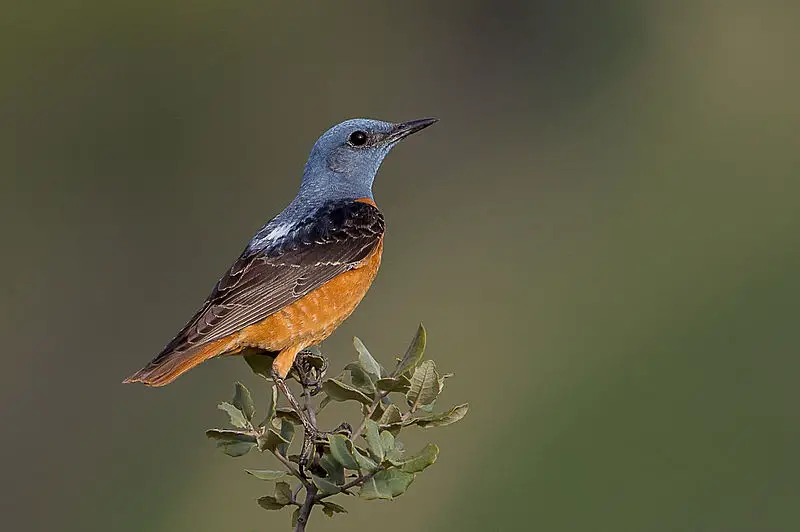
The Common rock thrush is a species of chat that belongs to the family Muscicapidae. Formerly placed in the family Turdidae, this bird is also known as the rufous-tailed rock thrush or simply rock thrush.
Its scientific name, Monticola saxatilis, is derived from Latin, with Monticola meaning “mountain dweller” and saxatilis meaning “rock-frequenting”.
The Common rock thrush can be found breeding in southern Europe, where it frequents mountainous areas and rocky terrain.
With its distinctive rufous tail and blue-grey plumage, this bird is a beautiful addition to any observation list.Scientific classification:
| Kingdom | Animalia |
| Phylum | Chordata |
| Class | Aves |
| Order | Passeriformes |
| Family | Muscicapidae |
| Genus | Monticola |
| Species | M. saxatilis |
Also Featured In: Birds Found in Hungary,
41. Savi’s Warbler
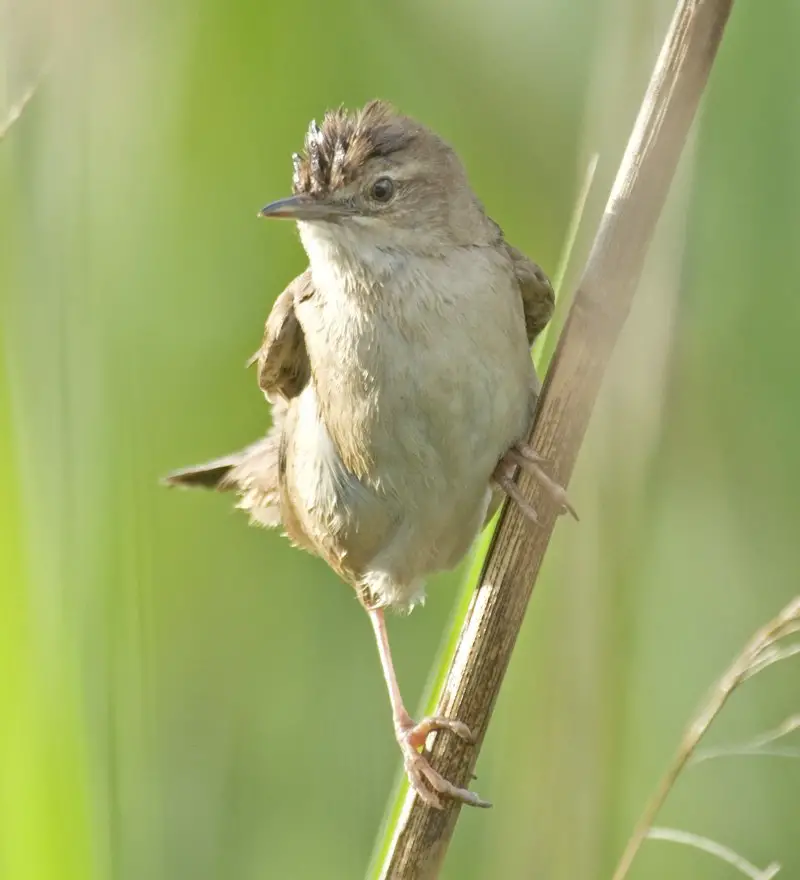
Savi’s warbler is a small, migratory bird found in Europe and the western Palearctic. This Old World warbler breeds in reed beds with some bushes and lays 3-6 eggs in a nest made of reeds.
The adult bird has a grey-brown back with no streaks and a whitish underside. It spends its winters in northern and sub-Saharan Africa.
This species belongs to the grass warbler genus Locustella and is known for its distinctive, high-pitched song.
Despite the bird’s brownish appearance, its song has been described as “metallic” or “bell-like.” Savi’s warbler is a unique and important species in its ecosystem, contributing to the biodiversity of its various habitats.Scientific classification:
| Kingdom | Animalia |
| Phylum | Chordata |
| Class | Aves |
| Order | Passeriformes |
| Family | Locustellidae |
| Genus | Locustella |
| Species | L. luscinioides |
42. Lesser Whitethroat
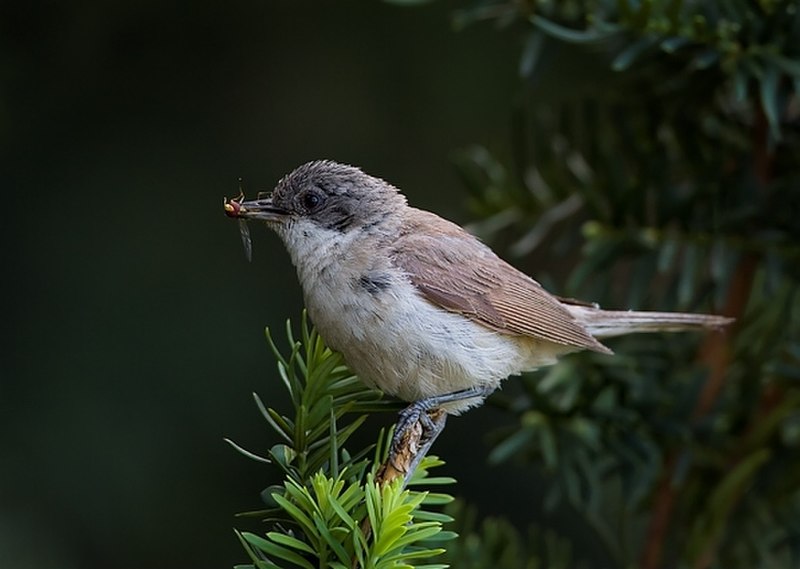
The Lesser Whitethroat is a typical warbler found in temperate Europe and the western and central Palearctic regions. It is a strongly migratory bird and winters in Africa, Arabia, and India.
Unlike many other typical warblers, the males and females of this species almost look the same. It has a grey back and is relatively small in size. The Lesser Whitethroat is a common and widespread bird in its range.
It is known for its distinctive and melodious song, which is heard during breeding season. It is also a skilled hunter and feeds on insects and other small invertebrates.
The bird is a favorite among birdwatchers and nature enthusiasts, who often spot it in gardens, parks, and woodlands.Scientific classification:
| Kingdom | Animalia |
| Phylum | Chordata |
| Class | Aves |
| Order | Passeriformes |
| Family | Sylviidae |
| Genus | Curruca |
| Species | C. curruca |
43. Water Pipit
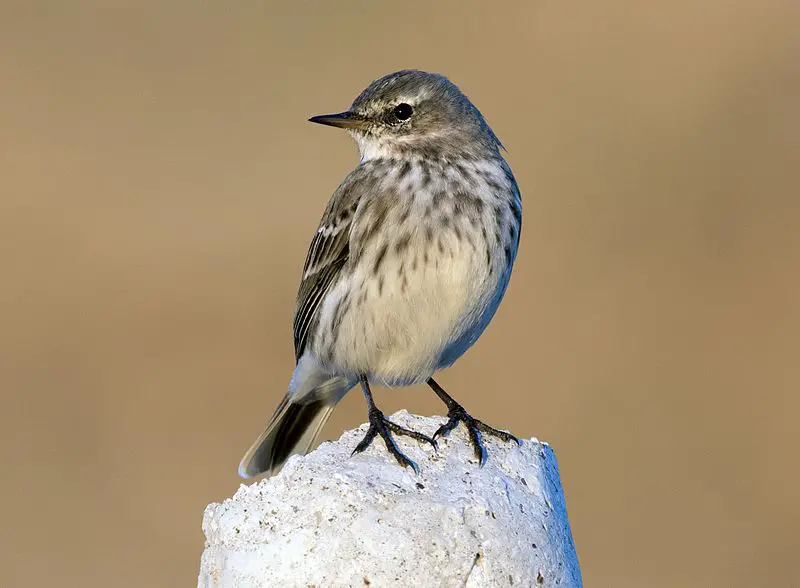
The water pipit is a small bird that breeds in mountains from Europe to China. It is a migrant, moving to lower altitudes or wet lowlands in winter.
The bird has greyish-brown upperparts, faintly streaked with darker brown, and pink-buff underparts that fade to white.
It is a passerine bird, meaning it perches on trees and sings using its strong voice. This species is also known for its short beak and long legs, allowing it to hop through rocky terrain and shallow water.
The water pipit is an important indicator of environmental health, as it requires wetlands and clean water sources to survive.
Despite this, the bird is currently listed as a species of least concern, with stable populations throughout its range.Scientific classification:
| Kingdom | Animalia |
| Phylum | Chordata |
| Class | Aves |
| Order | Passeriformes |
| Family | Motacillidae |
| Genus | Anthus |
| Species | A. spinoletta |
Also Featured In: Flight Birds You Should Know, Autumn Birds You Should Know
44. Garden Warbler
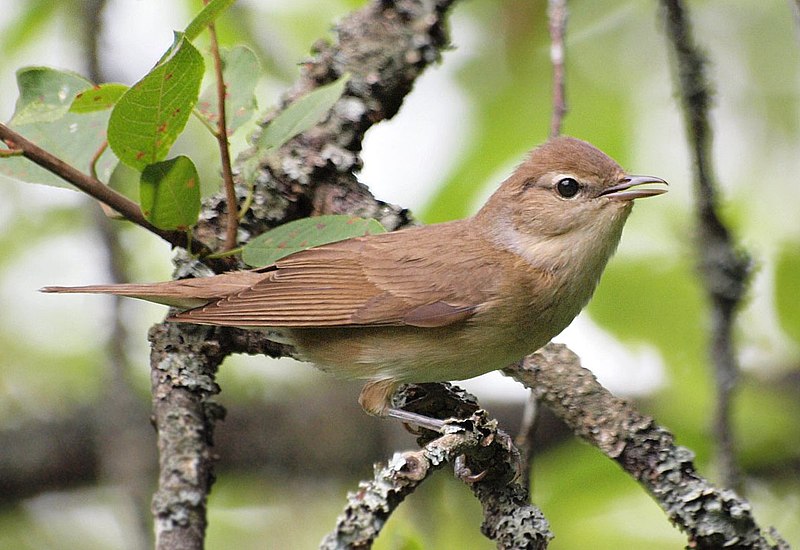
The garden warbler is a widely distributed small bird found in Europe and western Siberia. With brown upperparts and dull white underparts, it is a typical warbler species.
The bird has long wings and tail, and both males and females look similar. The juveniles look alike to the adults.
Two subspecies of the garden warbler exist, which are incredibly similar, and they sometimes interbreed.Scientific classification:
| Kingdom | Animalia |
| Phylum | Chordata |
| Class | Aves |
| Order | Passeriformes |
| Family | Sylviidae |
| Genus | Sylvia |
| Species | S. borin |
45. Barred Warbler
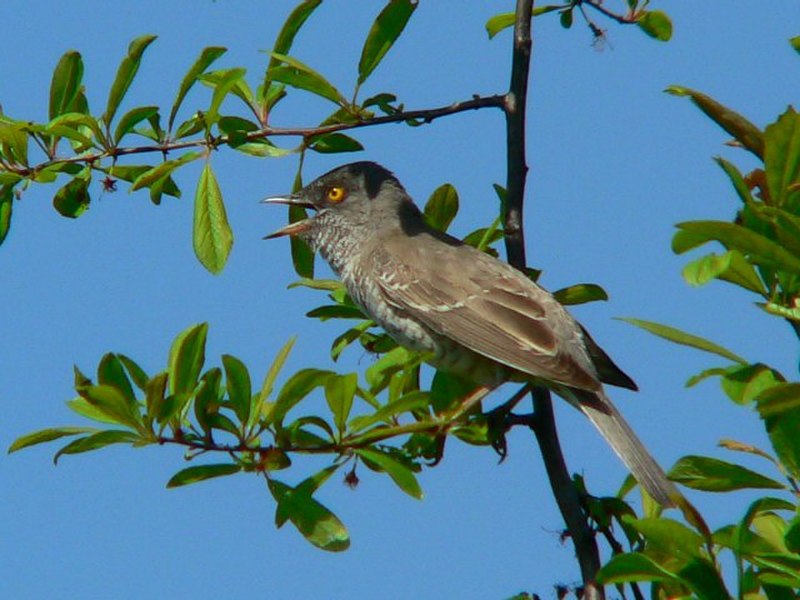
The Barred Warbler is a migratory bird that can be found in temperate regions of Europe and Asia. This species is larger than other Curruca warblers, measuring between 15.5 to 17 cm in length and weighing 22-36 g.
The Barred Warbler is mostly grey on its upper body and white on its underside. Males have dark grey coloring on their backs and wings with white stripes. During the winter, this species can be found in tropical Eastern Africa.
Like other warblers, the Barred Warbler has a distinctive song and can often be heard singing during the breeding season.
Despite their migratory habits, Barred Warblers are known to return to the same breeding grounds year after year.
In terms of conservation status, the Barred Warbler is currently listed as of Least Concern.Scientific classification:
| Kingdom | Animalia |
| Phylum | Chordata |
| Class | Aves |
| Order | Passeriformes |
| Family | Sylviidae |
| Genus | Curruca |
| Species | C. nisoria |
46. Common Grasshopper Warbler
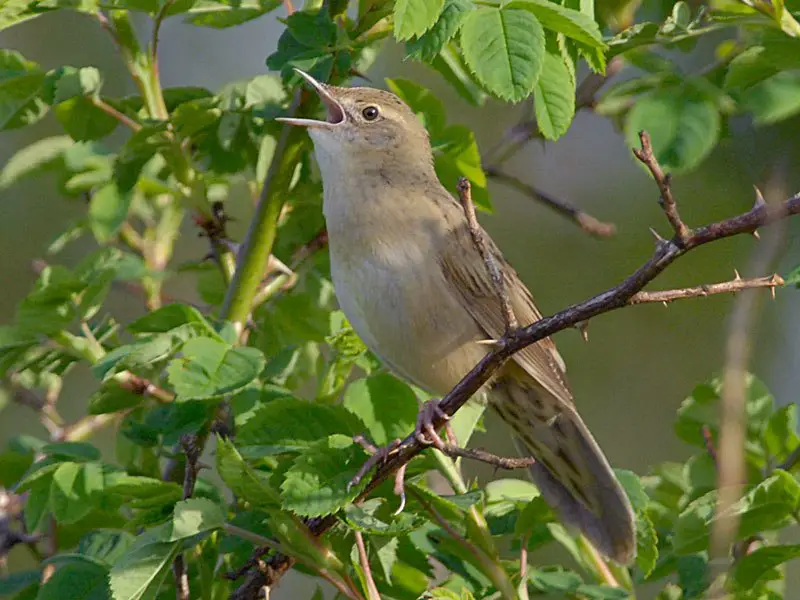
The Common grasshopper warbler is a small bird- a medium-sized warbler of just 13 cm long- found across much of temperate Europe and the western Palearctic.
This bird is migratory, wintering in north and west Africa. It is often found in short dense vegetation near water. As it is a passerine bird, it belongs to the order Passeriformes, and it is a part of the grass warbler genus Locustella.
The adult Common grasshopper warbler is brownish, with a greyish-brown head and a light brown breast.
It has a distinctive reeling song that sounds like a grasshopper in flight- hence its name. This bird feeds primarily on insects and spiders, which it catches while foraging in grassy areas.
The Common grasshopper warbler is an important bird that helps control insect populations in its habitat. Overall, it is a small but fascinating bird that plays a vital role in its environment.Scientific classification:
| Kingdom | Animalia |
| Phylum | Chordata |
| Class | Aves |
| Order | Passeriformes |
| Family | Locustellidae |
| Genus | Locustella |
| Species | L. naevia |
Also Featured In: Birds That Live in Anglesey,
47. Sedge Warbler
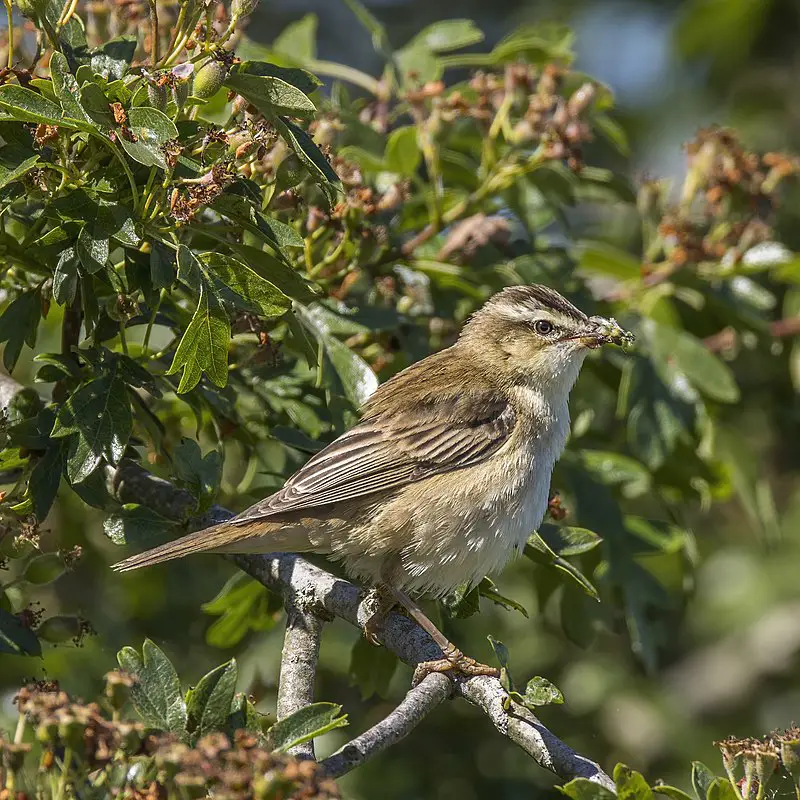
The Sedge Warbler is a medium-sized bird belonging to the Old World warbler family with a unique brown, streaked back and wings that easily identify it.
They have a distinctive pale supercilium. These birds are migratory and cross the Sahara to reach Africa from their breeding grounds in Europe and Asia.
The male Sedge Warbler’s song is notable for its random chattering phrases, making it unique among birds.
These birds are known for their migratory nature and form a significant part of the eco-systems they live in. The Sedge Warbler is not only a natural wonder but also a beautiful sight to behold.Scientific classification:
| Kingdom | Animalia |
| Phylum | Chordata |
| Class | Aves |
| Order | Passeriformes |
| Family | Acrocephalidae |
| Genus | Acrocephalus |
| Species | A. schoenobaenus |
48. Great Reed Warbler
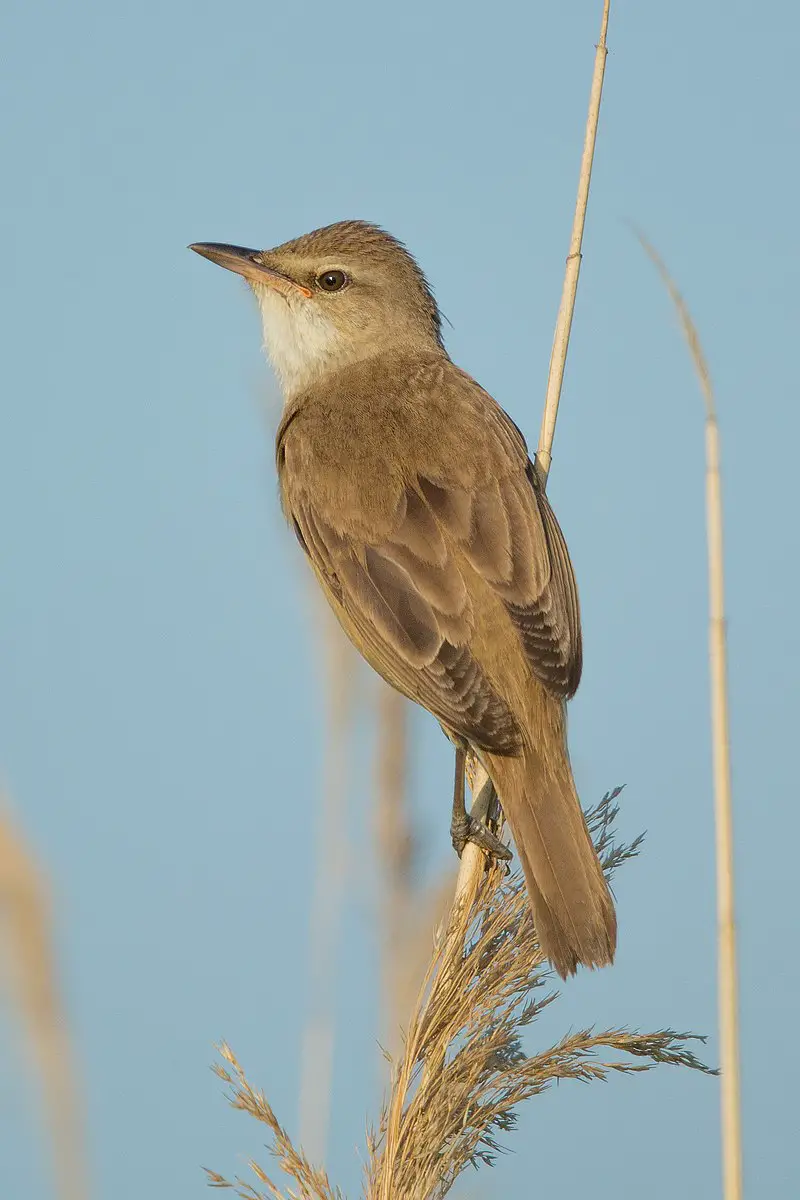
The Great Reed Warbler is a Eurasian bird and belongs to the genus Acrocephalus. This slender bird has a flat head, long tail, and a pointed beak. Its plumage is mostly brown with some streaks on the chest and abdomen.
Great Reed Warblers are known for their singing ability and can produce a variety of melodious sounds.
They usually breed in reed beds and wetlands, and their diet consists of insects and spiders. They were previously part of the Old genus, but now they are classified in their own genus.
The name Acrocephalus comes from Greek, meaning ‘highest head,’ while the specific name, arundinaceus, refers to its reed-like appearance. The Great Reed Warbler is a migratory bird and spends its winter in tropical Africa.Scientific classification:
| Kingdom | Animalia |
| Phylum | Chordata |
| Class | Aves |
| Order | Passeriformes |
| Family | Acrocephalidae |
| Genus | Acrocephalus |
| Species | A. arundinaceus |
Also Featured In: Birds You’ll Find in Moldova, Birds that Commonly Found in Pond
49. Lesser White-Fronted Goose
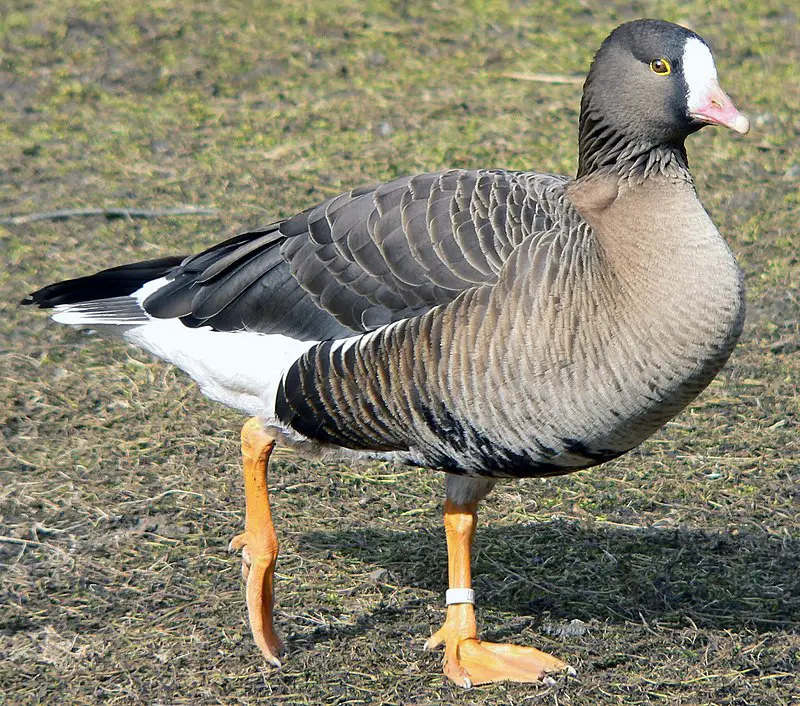
The Lesser white-fronted goose, a close relative of the larger white-fronted goose, is a rare breeding species in Europe and can be found in the northernmost regions of the Palearctic.
The goose has a red-footed appearance, which is reflected in its scientific name Anser erythropus, with erythropus being derived from the old Greek word for “red-footed”.
Due to its limited breeding areas, a re-introduction scheme has been initiated in Fennoscandia to help preserve the species.
The goose is a beautiful bird, with a striking appearance that attracts bird watchers from all over the world. Its unique features and habitat make it an important part of the ecosystem and a symbol of biodiversity conservation.Scientific classification:
| Kingdom | Animalia |
| Phylum | Chordata |
| Class | Aves |
| Order | Anseriformes |
| Family | Anatidae |
| Genus | Anser |
| Species | A. erythropus |
50. Marsh Warbler
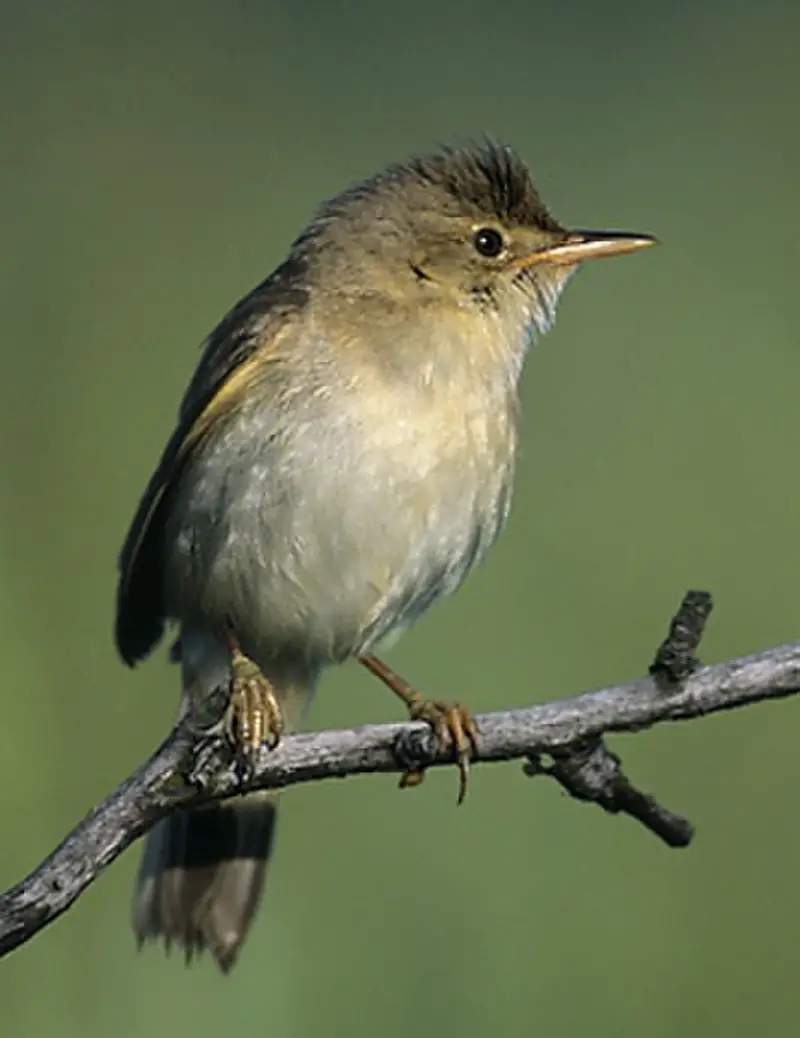
The Marsh Warbler is a small bird species found in temperate Europe and the western Palearctic region. During the breeding season, it inhabits diverse, mostly wet habitats.
It is famous for its unique, diverse, and melodious calls, which includes imitations of various other bird species. This ability to imitate sounds is one of its most striking features, making it distinct from other birds.
During winter, they migrate to southeast Africa. The Marsh Warbler belongs to the Old world warbler family, scientifically classified as Acrocephalus palustris.
They have small, slender bodies with brownish-green feathers, and the males are known to sing for long periods, trying to get the attention of nearby females.
Despite being a small bird, the Marsh Warbler has several unique adaptations that allow it to survive in the harsh environments of both Europe and Africa.Scientific classification:
| Kingdom | Animalia |
| Phylum | Chordata |
| Class | Aves |
| Order | Passeriformes |
| Family | Acrocephalidae |
| Genus | Acrocephalus |
| Species | A. palustris |
51. Western Bonelli’s Warbler
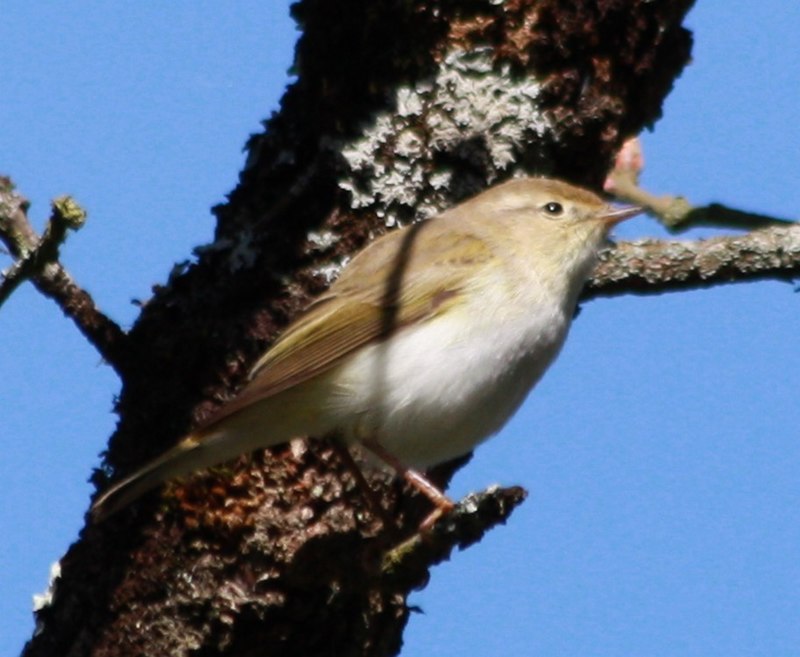
The Western Bonelli’s warbler is a species of bird in the leaf warbler genus Phylloscopus. Formerly considered a subspecies, it is now recognized as a separate species.
It is primarily found in western Europe during breeding season, where it inhabits forested areas. Its appearance and songs are distinct from those of the Eastern Bonelli’s warbler, which has a separate breeding range.
The Western Bonelli’s warbler is notable for its beautiful song, which is unique to each individual bird. It is a small, forest-dwelling bird with a distinctive greenish-brown plumage and a pointed, slender beak.
While not considered endangered, the Western Bonelli’s warbler’s populations have declined in some areas due to habitat loss and fragmentation.Scientific classification:
| Kingdom | Animalia |
| Phylum | Chordata |
| Class | Aves |
| Order | Passeriformes |
| Family | Phylloscopidae |
| Genus | Phylloscopus |
| Species | P. bonelli |